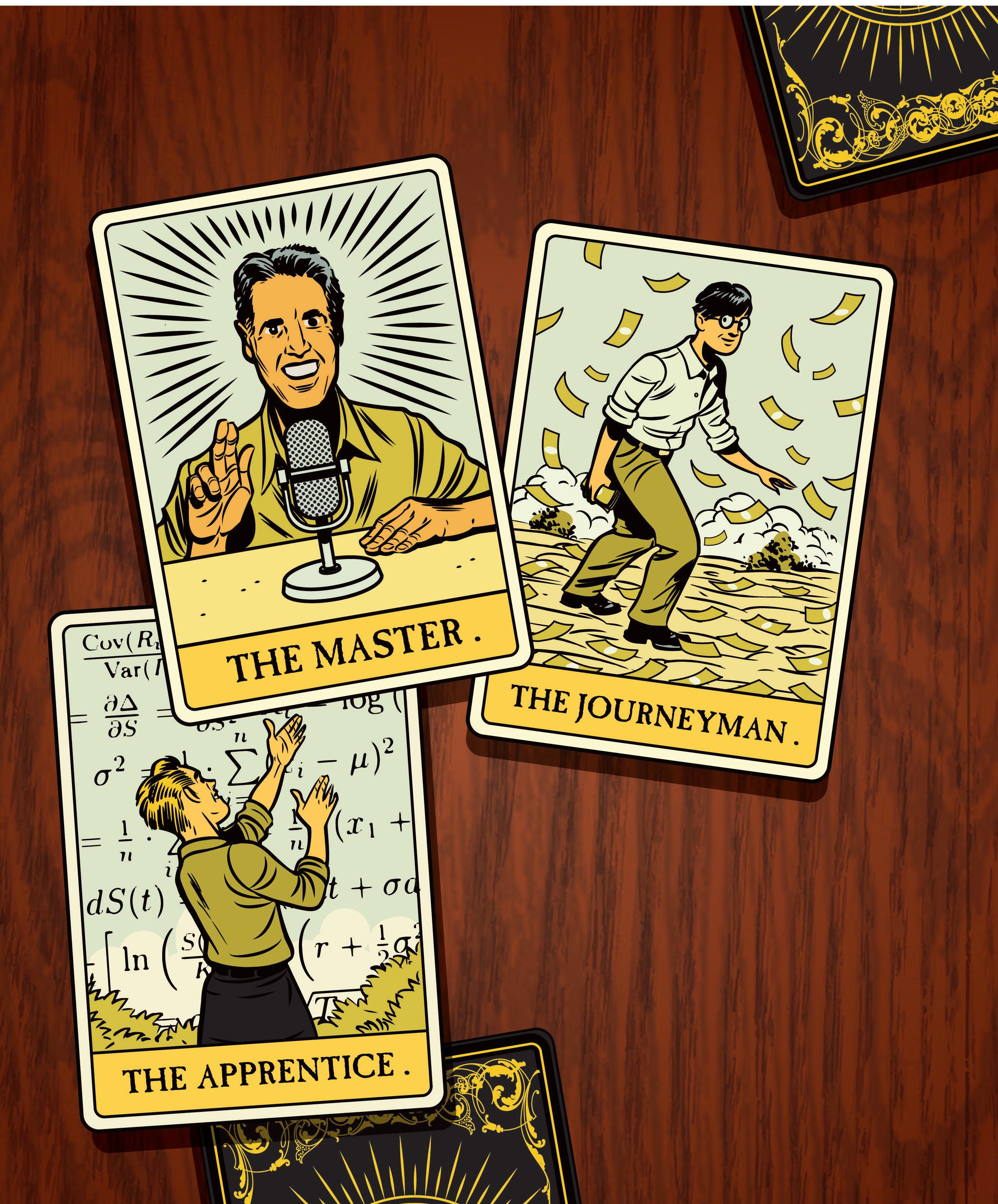




















18 | The Master: Trader & Educator

Tastylive co-host Tony Battista shares his expertise on options trading—and he doesn’t charge a cent.
22 | The Journeyman: The Path to a 153,000% Return

Dao turned $1,600 into $2.5 million in
made a


editor in chief ed mckinley
managing editors
yesenia duran james melton associate editors
kendall polidori navpreet dhillon editor at large garrett baldwin technical editor james blakeway contributing editors vonetta logan, tom preston, mike rechenthin creative directors tim hussey, gail snable contributing photographer garrett roodbergen editorial director jeff joseph

comments, tips & story ideas feedback@luckboxmagazine.com contributor’s guidelines, press releases & editorial inquiries editor@luckboxmagazine.com subscriptions & service support@luckboxmagazine.com
media & business inquiries associate publisher james melton jm@luckboxmagazine.com publisher jeff joseph jj@luckboxmagazine.com
Luckbox magazine, a tastylive publication, is published at 19 N. Sangamon, Chicago, IL 60607 Editorial offices: 312.761.4218 ISSN: 2689-5692 Printed at Lane Press in Vermont luckboxmagazine.com
Luckbox Magazine content is for informational and educational purposes only. It is not, nor is it intended to be, trading or investment advice or a recommendation that any security, futures contract, transaction or investment strategy is suitable for any person. Trading securities and futures can involve high risk and the loss of any funds invested. Luckbox Magazine, a product provided by tastytrade, Inc. (which uses the brand name tastylive) does not provide investment or financial advice or make investment recommendations through its content, financial programming or otherwise. The information provided in Luckbox Magazine may not be appropriate for all individuals, and is provided without respect to any individual’s financial sophistication, financial situation, investing time horizon or risk tolerance. Luckbox Magazine and tastytrade, Inc. are not in the business of executing securities or futures transactions, nor do they direct client commodity accounts or give commodity trading advice tailored to any particular client’s situation or investment objectives. Luckbox Magazine and tastytrade, Inc. are not licensed financial advisers, registered investment advisers, or registered broker-dealers. Options, futures and futures options are not suitable for all investors. Transaction costs (commissions and other fees) are important factors and should be considered when evaluating any securities or futures transaction or trade. For simplicity, the examples and illustrations in these articles may not include transaction costs. Nothing contained in this magazine constitutes a solicitation, recommendation, endorsement, promotion or offer by tastytrade, Inc., or any of its subsidiaries, affiliates or assigns. While Luckbox Magazine and tastytrade, Inc. believe that the information contained in Luckbox Magazine is reliable and make efforts to assure its accuracy, the publisher disclaims responsibility for opinions and representation of facts contained herein. Active investing is not easy, so be careful out there!
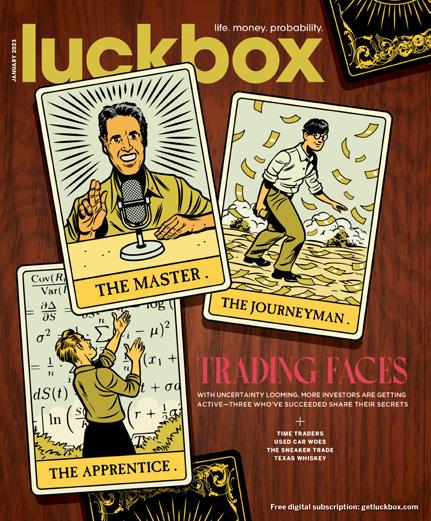
I’m starting with the man in the mirror (oh) I’m asking him to change his ways (oh) And no message could’ve been any clearer If you wanna make the world a better place Take a look at yourself and then make that Change
If you’re a passive investor, it may be time for a change.
The moment to begin trading actively has arrived with the Federal Reserve’s decision to stop propping up zombie companies and thus transform the exchanges into genuine free markets.
Because the Fed is continuing to increase interest rates to slow growth and tame inflation, less money will flow into the economy, making it more difficult for lackluster businesses to compete.
That creates volatility and, in turn, opportunities for active investors to make frequent but well-conceived trades.
One investor who’s poised to capitalize on the emerging heyday for active traders is Son Dao, who was born in Vietnam but now makes his home in Georgia.
See p. 22 for the story of how Dao turned $1,600 into $2.5 million in just 17 months of trading.
The account of Dao’s journey is flanked by the success stories of two other accomplished investors with a lot to teach us.
We’ve called those three featured investors the master, the journeyman and the appren-
tice, but those catchy appellations may not do them justice. All three have achieved mastery in their own ways.
But trading doesn’t end with the exchanges. Just about everything in life requires trades and tradeoffs. That’s a lot to cover, so we made some choices.
One type of trading we decided to explore is “timebanking.” Adherents swap their time and skills instead of shelling out cash.
By exchanging an hour or two here or there, they not only get to make the most of their own abilities but also benefit from the passions, training and experience of others. As a result, timebankers say everyone involved can benefit.
We also investigated high prices in the markets for two commodities a lot of Americans trade: sneakers prized for their collectability and used cars valued mostly for their practicality.
The pursuit of sneakers doesn’t just fill the shelves of enthusiasts. Devotees experience the thrill of the hunt as they track down and capture coveted shoes. Astute aficionados can trade up and thus amass the value they need to obtain the pair they want most.
With used cars, practicality—and even survival—can supersede other considerations.
Thinking Inside the Luckbox Luckbox is dedicated to helping active investors achieve skill-derived, outlier results.
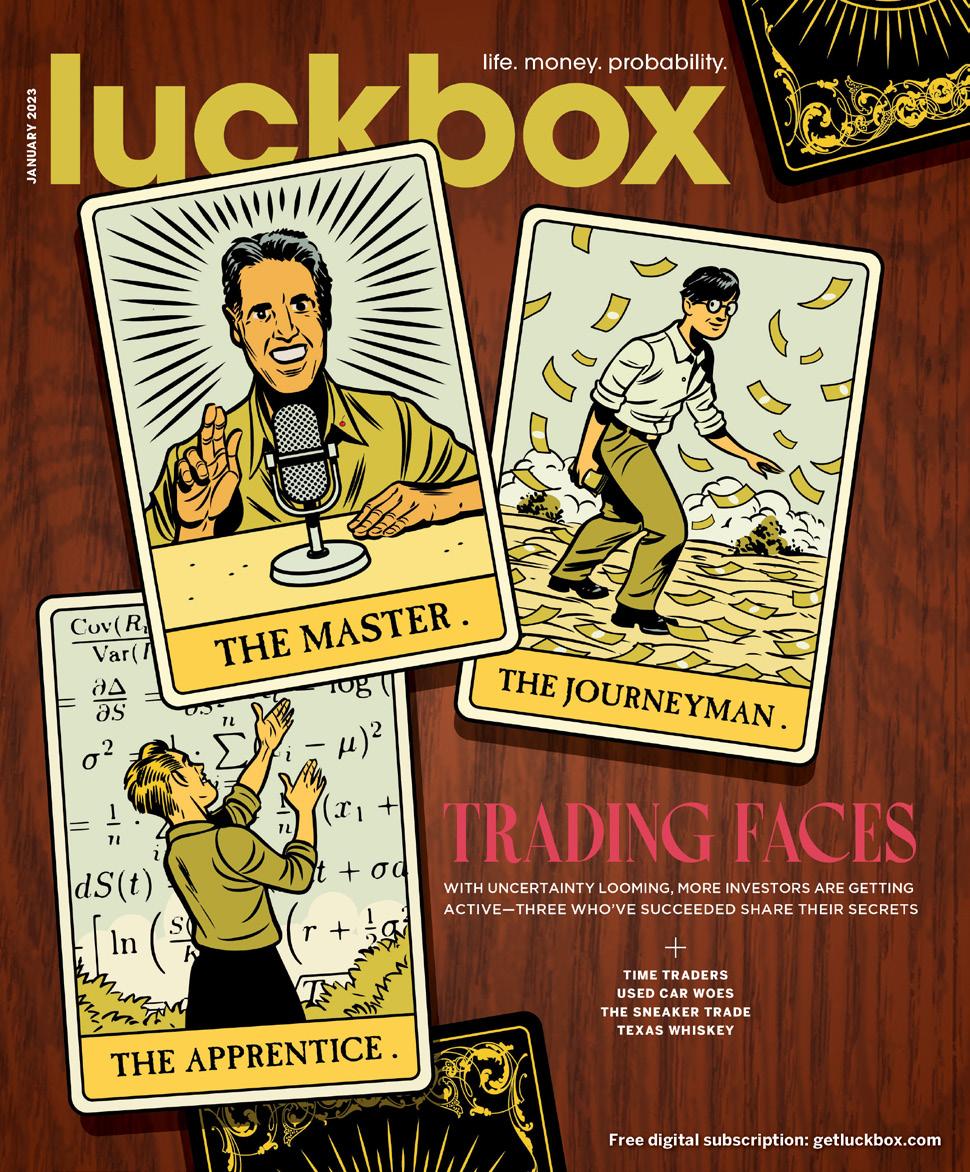
1 Probability is the key to improving outcomes in the markets and in life.
2 Greater market volatility brings greater opportunity for astute active investors.
3 Options are the best vehicle to manage risk and exploit market volatility.
4 Don’t rely on chance. Know your options because luck smiles upon the prepared.
Microchip shortages have kept new vehicles in short supply, so frustrated shoppers and dealers have turned to the second-hand market to take up the slack.
That blasted the price of used cars into the upper reaches of the stratosphere, sometimes placing formerly affordable models out of reach for average families. Is relief on the way? It’s complicated.
Yet, if things get bad enough, hard-pressed consumers can always fall back on the services of that way station on the road of hard luck—pawnshops.
But in these times, pawnshops no longer cater only to the most unfortunate clientele. Our Fake Financial News columnist paid a telephone visit to the proprietor of a luxury pawn shop in Southern California.
He describes his customers as “asset rich but cash poor.” They may need a loan on a pristine designer handbag or a faultless luxury wristwatch, and he accommodates them with a concierge-style experience.
What began with the exchange of a sharp rock for a saber-toothed tiger skin is still expanding its boundaries.
Trading: It’s all around us.
Your thoughts on this issue?
Please take the next reader poll at luckboxmagazine.com/survey
We asked Luckbox readers...
How would you describe your financial experience and literacy?
I am a professional 11%
Above average 59% Average 25%
Below average 5%
What type of investor are you?
Very active 43%
Somewhat active 45% Passive 9% I don’t invest 3%
How often do you trade using personal investment accounts?
At least once per day 40%
Several days per week 23%
At least once per week 14%
At least once per month 6% A few times per year 14%
What does your trading include?
Options 79% Equities 75%
ETFs 63%
Futures 38% Crypto 33%
Do you watch the tastylive network?
Yes 74%
Two ways to send comments, criticism and suggestions to Luckbox
Email tips@luckboxmagazine.com
Visit luckboxmagazine.com/survey
A new survey every issue.
Your thoughts on this issue? Take the reader survey at luckboxmagazine.com/survey
I liked the Grammy Awards article most this time. The probability and futures articles were at the high level I expect from the magazine. Great layout and wonderful formatting makes it a joy to read. —Nicolaas Pereboom, Aix-en-Provence, France
I loved the Forecasting issue: Dr. Jim’s health piece, six traders, Julia Spina’s stats piece and holiday gifts that I haven’t seen elsewhere. Really good work. —Jack White, Berryville, Virginia
I enjoy the variety of topics—from predictive analytics to indie music. Great to learn a bit about a lot of things. —Jenny Thorvaldson, Denver
I read Luckbox to see what all the smart people are thinking. I often fade the consensus, because that’s how I roll. As long as your articles make me interesting at parties, I’ll keep reading.

—Tony Porter, Trego, Montana
I really enjoy the printed publication. All the articles are great. I’ve worked in publishing, so I know how hard it is to put out a quality magazine month after month. Good job!
—Annie Goodman, Edwards, Colorado
There’s more to Luckbox than meets the page.
Look for this QR code icon for videos, websites, extended stories and other additional digital content. QR codes work with most cell phones and tablets with cameras. Open your camera
1 Hover over the QR code
2 Click on the link that pops up

The number of pawnshops in the U.S.
—IBISWorld, 2022
Twenty-four
SEE PAGE 26
SurveyMonkey Market Research, 2021
SEE PAGE 14
SEE PAGE 10
The trading returns of Son Dao
The 28-year-old Georgia-based investor turned $1,600 into more than $2.5 million in just 17 months.
—Verified by Luckbox
SEE PAGE 22
Wiz Khalifa
SEE PAGE 28
“When
Do rich people pawn stuff? California-based Ideal Luxury offers clients private consultations in an office that looks more like an Edward Jones than an EZ Loan.
 By Vonetta Logan
By Vonetta Logan
Orange County, California: Home to smog, pristine beaches, housewives botoxed to within an inch of their life…and pawnshops?
I hadn’t been to a pawnshop since I was 15 years old and in the market for a used acoustic guitar so I could become the Black Jewel. (Does that make me onyx?) Anyhoo, all of my knowledge of pawnshops comes from the reality series Pawn Stars
But this issue of Luckbox is all about trading and bartering, so we decided to interview the nation’s premier luxury pawnbroker. Our objectives included learning about the upscale pawn market, discovering how to get luxury goods for less and finding out whether rich people really pawn stuff.
In his book Pawnonomics, author Stephen Krupnik details the 5,000-year history of the pawnbroking industry and makes the tonguein-cheek claim that pawnbroking is the second oldest profession. But that joke may have a basis in fact—depending upon your experience, you might walk out of a pawnshop feeling like you got screwed.
“Every year, some 30 million Americans frequent the country’s 11.8k pawnshops in the hopes of securing a loan in exchange for collateral,” writes Zachary Crockett for The Hustle , a website created to debunk nearly everything. Pawnshop loans, purchases and sales add up to $6 billion dollars per year, he notes.
But dollars and cents alone can’t explain the whole pawnshop “experience” of neon signs, buzzing doors, and a man with a cigar protruding from his mouth saying, “Best I can do is…”
Yet, California entrepreneur Mark Schechter suspected there was a better way. To
spend time with his family, he went into the jewelry and loan business with his father in 2008. At first, their store was a traditional pawnshop, and Schechter found himself working even more hours than at his old corporate job.
“I had a good friend whose wife is Panamanian,” he said. “Yeah, in Panama [pawn] is totally different. You go sit in someone’s office with a cup of coffee and discuss your private business behind closed doors. It’s done privately—not publicly.”
That seed of an idea germinated, and in 2013 Schechter launched Ideal Luxury in Tustin, California. The American luxury pawn concierge was born.
Ideal Luxury provides clients private consultations in an office that looks more like an Edward Jones than an EZ Loan. He offers loans, consignment and a retail arm of the business.
Some 7.4% of all U.S. households have visited a pawnshop, according to the National Pawnbrokers Association. That figure jumps to 40% among lower-income earners.
The average pawn loan is just $150, but even that amount can be significant to someone in dire financial need. During the pandemic, Schechter quickly pivoted to meeting the needs of high-end customers who wanted to buy tangible assets.
“We saw our retail sales go nuts when COVID first hit,” he recalls. “We had a streak, and I want to say it was almost two straight months where every week we had a retail sale that was five figures or greater.”
Watches became his favorite tangible asset during the pandemic, and Ideal Luxury offers timepieces only from companies like Rolex, Patek Philippe and Audemars Piguet.
Now, as the economic climate shifts, Schechter is seeing changes in his business. “You’ve got to add some zeros” to the end of the loans his clients now need, he says.
“Our loans might have been 20% of our business because we’re a quality play, not a quantity play,” Schechter says of the days before the pandemic. “I would say right now on the lending side it’s probably closer to 40%,” with an increasing number of loans sought for luxury purses, watches and jewelry.
So, what’s next for Ideal Luxury?
“We’ve pulled back on what we take in and how much we offer,” Schechter acknowledges. “It’s gone from a seller’s market to a buyer’s market. So, before I would take what I could get, but I can only buy so many watches and diamonds in the next 30 days. I’ve got to make sure that what I’m buying is something that I don’t mind owning for a long time if things get really bad.”
He sees that trend lasting until the end of Q4 2023.
I assume rich people dive into their rooms full of money á la Scrooge McDuck. So, I asked Schechter for examples of how his clientele use the loan part of his business.
In California, pawnshops’ monthly interest rates are around 3% for loans under $2,500. Over that amount, rates are “negotiable.”
Schechter’s clientele qualify as “asset rich and cash poor” and use his loans to bridge a liquidity crisis, he says. He tells me of a young real estate agent out to make a name for herself. She closed her first deal but her commission check wouldn’t hit her account for another six to eight weeks. But she had a Birkin
Rolex, had a value of $50,000. Ideal Luxury takes 25% on consignment, so the customer walked away with nearly four times as much cash. Schechter’s industry knowledge paid off.
Bougie-adjacent shoppers find really good deals at pawnshops. Curious about this trend, I visited the premier pawnshop in Chicagoland. (Narrator: “It was not premier. It was in a sad strip mall next to Papa John’s.”)
The jewelry in the pawnshop’s case looked appropriate—for an out-of-the-way Service Merchandise in 1984. Luxury offerings included a sad-looking cream-and-white Louis Vuitton Neverfull tote. A mint green Gucci clutch looked out of place next to a gun rack.
I then toured the Ideal Luxury site for comparison and was blown away by the high-quality luxury goods and competitive prices. Unlike sites like Tradesy and Poshmark, Schechter takes in only the pristine goods and then uploads their unretouched, unedited photos to the site.
He once acquired a Harry Winston ring valued at $2 million on a fortuitous charity ski trip but sold it for less than a million.
A fetching pink diamond in a gorgeous setting caught my eye on the site. A widow sold it to Schechter so she could buy property.

handbag her mom gave her for graduation. She used a loan on the bag to live on until her check cleared. (I think I got a Panda Express gift card when I graduated.)
Ideal Luxury’s loans also help entrepreneurs—sometimes a lot. “I always say we’re not saving lives,” Schechter continues, “but I’ve had someone that had to make a COBRA (health insurance) payment. Within two hours they’re going to lose their health insurance.”
On the consignment side of the business, Schechter offers the tale of a man who brought in a bag of jewelry and a wristwatch without straps. A competing broker had offered the man $10,000 for the watch, but Schechter wanted to do some digging, and the client agreed.
It turns out the watch, a rare, sought-after
One potential client offered to sell a Rolex watch at a considerable discount, even though it “will get me out of jail anywhere in the world,” he says. Um, you do you, buddy.
I hope never to need a luxury concierge, but if I ever do I’d want one that lists core values on its website—the way Ideal Luxury does.
The pawn industry is under threat because legislators want to wrap pawn loans in the same blanket as “predatory payday loans”— even though the owners reclaim most of the goods offered up for pawn.
Schechter is confident and charismatic, and he remarks more than once to Luckbox that “I’m not of the business—I’m in the business.” But he’s changing the way the pawn business works and for the better. So, if you’re a large bearded man, I’m a ring size 6 and I love the color pink.
The luxury pawn clientele is asset rich and cash poor.



A TRADER’S MARKET IS RESULTING FROM THE CONVERGENCE OF FOUR ELEMENTS—A RECESSION, INFLATION, HIGHER VOLATILITY AND A HAWKISH FEDERAL RESERVE, ACCORDING TO ECONOMIST GARRETT BALDWIN. THIS LUCKBOX SPECIAL SECTION ON TRADING KICKS OFF WITH BALDWIN’S VIEWS ON HOW ACTIVE INVESTORS CAN CAPITALIZE ON THAT MASHUP OF ECONOMIC TRENDS. THE SECTION’S TRADING COVERAGE CONTINUES WITH PROFILES OF THREE SUCCESSFUL INVESTORS WHO’LL BE MAKING THE MOST OF THIS YEAR’S OPPORTUNITIES FOR ACTIVE TRADING. WE’RE CALLING THEM THE MASTER, THE JOURNEYMAN AND THE APPRENTICE.
BUT REGARDLESS OF A TRADER’S EXPERTISE, TIME IS MONEY. THE SECTION ENDS WITH AN ACCOUNT OF “TIMEBANKING,” A MOVEMENT WHOSE ADHERENTS TRADE AN HOUR OR MORE OF THEIR TIME INSTEAD OF PAYING CASH FOR GOODS AND SERVICES.


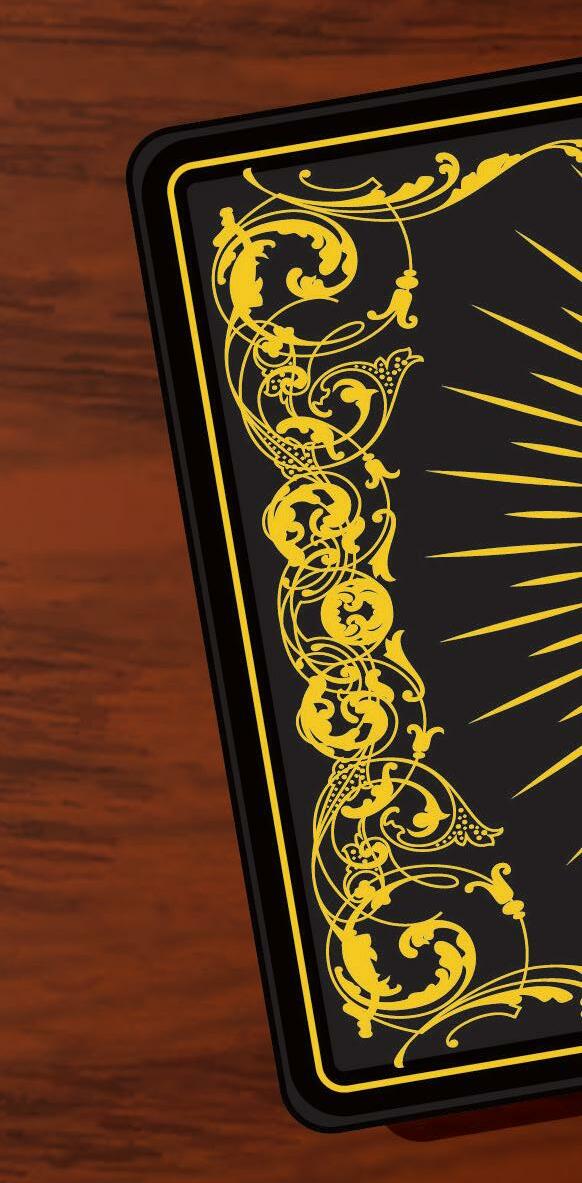
CHAOS WILL ROIL THE ECONOMY THIS YEAR, BUT THE FEDERAL RESERVE IS CREATING MARKET OPPORTUNITIES FOR ACTIVE INVESTORS
BY GARRETT BALDWINKeeping active doesn’t just improve your health. It also bolsters financial well-being. But it hasn’t always been that way. For years, the debate over active and passive investing has favored the latter. Capital has swung toward exchange-traded funds (ETFs) and mutual funds in an equities market driven by Federal Reserve policies.
Active investing requires a portfolio owner, manager or other “active participant” to make investment decisions and buy and sell equities frequently. Passive investing requires fewer trades and usually involves trying to replicate or outperform the performance of a stock index, such as the S&P 500.
Passive investing has been on a roll. In 2007, Warren Buffett inspired traders to pour more capital into passive funds by winning a $1 million wager against money manager Ted Seides.
Seides had bet his hedge fund could beat a passive S&P 500 fund, but it didn’t. And for years afterward, the performance of active managers continued to trail the relevant indexes.
It’s been difficult to beat the market because the Federal Reserve has been
propping it up. Over the last 13 years, the Fed poured nearly $8 trillion into the economy by keeping interest rates at record lows. Unprofitable zombie stocks surged, and careers blossomed for fund managers hawking innovative ETFs and passive strategies—regardless of valuations or fundamentals.
But now the markets have shifted. The Fed is continuing its tightening, including higher interest rates and a planned balance sheet reduc-
tion of $1 trillion. In the first nine months of 2022, 60-40 portfolios containing 60% stocks and 40% bonds turned in their worst performance ever. Cryptocurrencies shed 90% or more of their value, and exchange-traded funds like the WisdomTree Cloud Computing Fund
This market is jittery with investors responding differently to the same news in a matter of weeks.
-0.30 (0.07%)
Nov. 2—Fed chairman signals commitment to higher interest rates to combat inflation. SPY drops 13.87 points in 90 minutes.
Nov. 10—CPI registers at 7.7% for October. SPY gains 20.54 points from previous day’s close.
Nov. 30—Fed chairman signals commitment to higher interest rates to combat inflation. SPY jumps 14 points in five hours.
410.00 405.00 400.00 395.00 390.00 385.00 380.00 375.00 370.00 365.00
407.38
(WCLD) dropped in value roughly 50% in 11 months.
What’s more, the pain may not be over for the zombie stocks.
But this year will bring a stock picker’s paradise and an active trader’s market that will see momentum swings, bear rallies and short squeezes like in 2022. And if the Fed does pivot, expect even brighter skies.
So, let’s discuss the joy of active trading and seven reasons why investors can beat the market in 2023 and outperform the ever-growing crop of passive investment vehicles.
Investors have hung on every word uttered by Federal Reserve Chairman Jerome Powell since the central bank began contemplating rate hikes and balance sheet reductions late in 2021.
Markets sank in January 2022 on the expectation of small rate hikes and surged on the promises of “no recession” in March, following a meeting of the interest-rate-setting Federal Open Markets Committee (FOMC). Wild swings defined the markets of 2022.
By the end of the year, the slightest change in what Powell said about inflation could trigger a slump or fuel a rally. In November, for example, markets experienced dramatic swings up and down based on his statements.
First, Powell reminded investors the central bank would continue to raise rates to combat inflation. His statement set off the worst one-day performance ever on the day of an FOMC meeting.
breakdowns. It also showed differing interpretations of a Fed message can cause wild swings in equities in the months ahead.
As of December 2022, markets continued to price in odds of rate cuts by late 2023, suggesting the central bank has reached its goal of bringing inflation down to its 2% target. Such an achievement would have no historical precedent, and supply chain challenges and energy volatility may persist, creating inflation in the year ahead.
By May 2023, the market will likely start to anticipate that the Fed will begin discussing the timing of rate cuts. Instead of focusing on the size of rate hikes as in 2022, future speculation will center on the size and timing of moving the Fed funds rate lower to stimulate the economy.
Wary corporate executives have yet to jump back into buying stock in the companies they manage.
Then, Powell spoke at the Brookings Institution on Nov. 30 and again declared the Fed would raise rates with the goal of reaching 2% inflation—but at a slower pace. Speculation that the Fed might call for a 50-basis-point hike touched off a short-covering S&P 500 rally over the last two hours of the trading day.
Powell’s language had changed only a little, yet markets delivered two much different outcomes.
Given the dramatic short exposure in the market, a squeeze pressed the S&P 500 to a critical technical level of 4,100 in two days. It was a reminder of how contrarian approaches based on technical levels and never-ending speculation can cause dramatic rallies and
Expect more volatility, more range-bound trading and more price swings through the duration of the Fed’s quantitative tightening. It makes for a more exciting market for active, disciplined traders who aren’t afraid of riding these waves.
November and December are typically strong months for executive insider buying, which occurs when corporate leaders buy stock in the companies they run.
However, insiders haven’t bought aggressively since January 2022, signaling they may believe the bottom isn’t in. The whipsawing markets have created chaos, squeezed out shorts and fueled dramatic reversals.
But executives appear keenly aware of potential recessionary pressure, the threat of earnings compression and more challenges for the macroeconomic outlook.
The chart above shows the five-day moving average of insider buying to insider selling over 17 years.
The higher the blue line on the chart, the higher the

IT’S BEEN DIFFICULT TO OUTPERFORM THE MARKET BECAUSE THE FEDERAL RESERVE HAS BEEN PROPPING IT UP.
ratio of executive purchases to sales. In October 2008, executives were historically early in calling a bottom in the market but soon doubled down in March 2009 when the Fed expanded its quantitative easing.
The chart suggests executives collectively called the bottom in the market in the 2011 European debt/U.S. debt ceiling crises, the 2015 China tantrum, the 2018 Fed rate hike cycle pivot and the March 2020 crisis after the Fed’s stimulus program.
Insiders were early again in January 2022, with the most robust buying ratio since the beginning of COVID. However, we haven’t seen a purchasing period that resembles the previous crisis, which means executives
S&P 500 Index fund and carries a 26.4% stake in information technology stocks. Again, someone should explain the investment thesis. While those funds may continue to hold a large swath of technology stocks, there’s the threat of forced selling, capitulation or capital rotation among funds to other assets.
If thematic ETFs start to sell assets like Apple and move back to their investment thesis, it could create interesting price action.
For 13 years, it’s been easy to believe fundamentals no longer matter.
The post-COVID rally of 2020 helped power a remarkable equity rally that started to deflate in February 2021 in tech stocks and compounded with a decline in January 2022.
remain wary of the economy and await more direction from monetary leaders.
That suggests more pressure may come for this economy and the market.
Last year was challenging for managers at ETFs as valuation compression and speculation about Fed policy pushed asset prices lower.
ETF managers have engaged in more crowded trades to align with their benchmarks. A fine example is widespread adoption of Apple (AAPL) shares to both active and passive ETF portfolios.
In January 2021, 289 ETFs owned Apple shares, according to ETF.com. By December 2021, the figure had increased to 320. By the end of 2022, the tally grew to 403. The proliferation of ETFs is undoubtedly driving the trend.
Still, the significant increase explains an ongoing adoption of technology stocks to align with the performance of benchmarks—largely the S&P 500 ETF (SPY) and the Invesco Nasdaq100 ETF (QQQ). Apple represents 6.5% of the weight on the SPY and 13.2% of the QQQ.
As geopolitical tensions have grown worse, supply-side challenges remain in critical sectors like energy, agriculture, real estate and materials. Even in the face of China’s increasing demand for oil, uncertainty about Russia’s supply and domestic upticks in production, several companies are trading in U.S. energy markets at attractive valuations.
For example, Marathon Oil (MRO) and Epsilon Energy (EPSN) operate in oil production and exploration. Both companies have strong balance sheets and low buyout multiples. Their enterprise value compared with earnings before interest, taxes depreciation and amortization (EV/EBITDA) is under eight.
Instead of purchasing these stocks at current prices, active investors can sell put spreads to maximize long-term gains. For Marathon Oil,
As with most bear markets, 2022 saw sharp, short-lived rallies, followed by drastic drops.
Such decisions may have violated the original investment thesis of the ETF itself. For example, the Global X S&P 500 Catholic Values ETF (CATH) reputedly aims “to provide an efficient solution for investors looking to invest by Catholic beliefs.” So, what does a 6.6% weight in Apple, 5.6% stake in Microsoft (MSFT), 2.5% stake in Amazon (AMZN), and 1.7% stake in Alphabet (GOOGL) have to do with Catholic values? The Fund’s net asset value has a nearly identical performance to the
consider selling the $23 put for April 2023. Buying the $21 put for protection requires $145 in buying power to generate $55 in credit. That represents a 38% possible return by April and gives traders a breakeven price of $22.45. That breakeven represents a 16% drop from
December and has a probability of profit above 65%. Consider doing it if the implied volatility rank is above 30.
Next year could create some unstudied liquidity tension for the markets. The Federal Reserve will still be cutting its trillion-dollar balance sheet.
Meanwhile, corporate buybacks—companies using excess cash to repurchase and retire stock—may have peaked. Last year, Goldman Sachs (GS) noted that buybacks totaled nearly $1 trillion with companies like Apple leading the way. But in October, Goldman slashed its outlook for S&P 500 buybacks by 10% because of concerns about future earnings.
Any pullback in buybacks could create additional liquidity pressure, while the January implementation of the 1% buyback rule mandated in the Inflation Reduction Act of 2022 may deter the practice.
In 2019, Larry Light at Fortune magazine noted that financed debt funded more than 50% of corporate buybacks that year. The practice is common, but with interest rates rising and concern about recession, more pressure could come to bear on companies to stay calm but be ready for problems.
Tastylive, the online television network for active options traders, continues to expand its coverage of implied volatility rank (IVR). It focuses on active trading strategies that use IVR to gain advantage.
IVR on a 52-week scale compares the current ranking of a stock’s implied volatility to all other days over the past year. Understanding IVR can help traders identify what to trade and what strategy to use.
An IVR of 25 would mean implied volatility sits 25% of the way between last year’s highs and lows. An IVR of 60 indicates implied volatility sits at the 60% level in that range.
Tastylive hosts Tom Sosnoff and Tony Battista typically look for stocks with an IVR over 30 to sell options to generate income at a high probability of success. When stocks are trading under 30 it’s a potential opportunity to go long premium and buy calls and spreads.
Look for stocks with high liquidity scores indicating tight liquid markets. Combine them with high IVR to sell premium. Look for high liquidity scores and low implied volatility to buy premium.
Decades of research have established that investors can’t time the market.
But would-be traders would do well to learn about market momentum gauges, an active tool created by J.D. Henning, an academic, active trader at Seeking Alpha, and editor of Value and Momentum Breakouts, a service for investors.
Henning uses a variety of technical trading strategies to manage 12 portfolios, including an active ETF portfolio and a leveraged/inverse leveraged ETF portfolio. As of Dec. 1, 2022, all his portfolios had beaten the S&P 500.
His automated momentum gauges that actively track capital flows in the market have been even more impressive. There are lots of momentum switches, but Henning’s versions had remarkable success in 2022.
He bases his extensive research on his doctoral dissertation, and
he follows S&P 500 and Russell 2000 momentum by tracking breakout and breakdown conditions in an entire universe of stocks. He brings it down to one positive or negative number and actively trades stocks, index funds and leveraged funds based on his proprietary momentum gauges.
Henning’s record of avoiding dramatic selloffs in 2022 is complemented by his service’s historical performance dating back to 2019. His model has measured 22 topping signals that preset short-term selloffs and correctly tracked large inflows that fueled positive momentum swings and moved higher on the SPDR S&P 500 ETF
and the iShares Russell 2000 ETF.
Through September 2022, four major topping events occurred in the market, which predated more significant selloffs. They were on Jan. 13, April 6, June 10 and Aug. 26.
In April, a furious selloff complemented the most substantial outflows of capital from ETFs since 2018. Following the June 8 selloff that pushed the market from overbought to oversold in seven days, the gauge was correct in the early stages of the sharpest hedge fund selloff in more than a decade.
The system creates another tool for active S&P 500 and Russell 2000 traders. Active traders are better at managing options strategies—like put selling and covered calls.
So, what does it all mean? In 2023, markets will continue to parse every word Powell utters, algorithms will still account for 80% of the trading and options will continue to explode in popularity.
The macroeconomic climate, technical setups, and fundamental opportunities create a very active environment.
Don’t buy and hold. Trade smart… and actively.
Garrett Baldwin, a commodity and trade economist, serves as Luckbox editor-at-large. He actively trades value and momentum stocks and wagers on sports and prediction markets.
IN 2023, MARKETS WILL CONTINUE TO PARSE EVERY WORD POWELL UTTERS, ALGORITHMS WILL STILL DISTILLATE 80% OF THE TRADING AND OPTIONS WILL CONTINUE TO EXPLODE IN POPULARITY.
ony “The Bat” Battista has been “in it to win it” since his early days on the streets of Brooklyn.
The legendary trader, skillful educator and valued co-host to Tom Sosnoff on the tasty live financial network, recently sat down with Luckbox to reflect on how he taught himself to trade and why he helps others write their own rags to riches stories.
The only child of a single mother who tried to keep him on a straight and narrow path, Battista learned much later in life that he was one of five children from his father. As a child, he thought his dad was on a very long car-buying trip, but he was actually serving time in Lewisburg State Penitentiary for bookmaking.
Battista chose not to follow in his father’s loan-shark footsteps. Instead, in 1980 at the age of 18, he packed up his mother’s Dodge Diplomat, shoved his last $300 into his pocket and pointed the car westward toward Chicago and the new Chicago Board Options Exchange (CBOE).
“I always thought when I left Brooklyn, New York, to come to Chicago, that I would stay in Chicago for a couple of years, make a fortune and then move right back to my same neighborhood in Brooklyn,” Battista said. “But you quickly learn once you get a taste of a good life here, what you had there was good only because your bubble was so small.”
Thanks to his cousin, he landed a job as a runner on the floor of the CBOE making $600 a month, which barely covered his daily commuter train ticket and the rent for his studio apartment in suburban Highwood.
“I was broke,” Battista remembered.

A man of the side hustle—such as selling discounted Jordache and Sasson designer jeans out of his trunk as a New York livery driver—Battista set up a legit sideline in Chicago that connected him to some of the most influential CBOE players.
Forty years ago, floor traders made their marks on trading sheets—actual pieces of paper, not computer screens. Trades happened fast and the handwriting was often sloppy, so the heavy hitters liked to come into the office on Saturday morning, collect their trading sheets, check the math and have their work done before starting fresh on Monday morning.
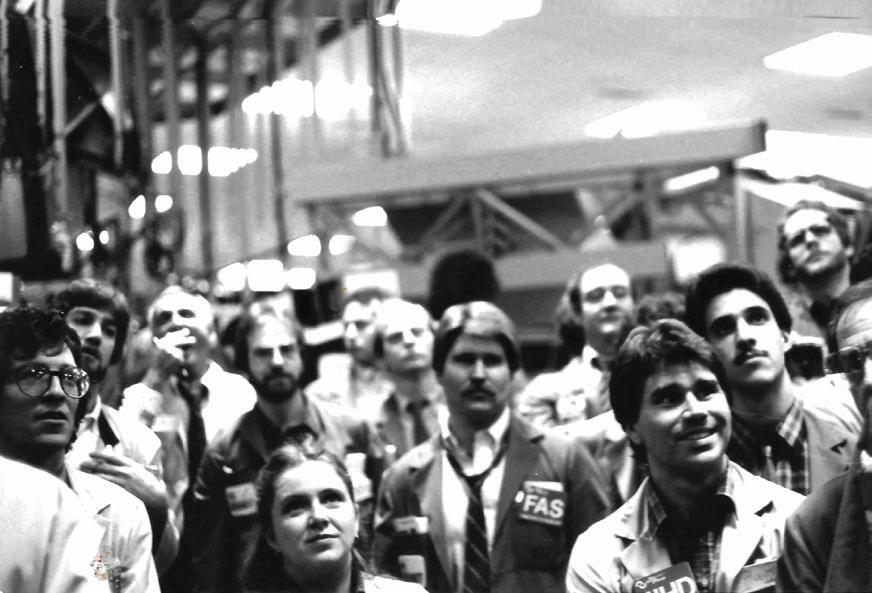
Battista witnessed this and decided to head into the office on a Saturday morning, too, and pitched a courier service for traders. Suddenly, everyone
“THOSE WHO CAN’T DO, TEACH” IS A TRUNCATION OF A LINE FROM MAN AND SUPERMAN, A 1905 GEORGE BERNARD SHAW PLAY.
IT’S A MAXIM THAT’S OFTEN TRUE IN THE WORLD OF OPTIONS TRADING, WHERE HUCKSTERS POSE AS TEACHERS TO PEDDLE POINTLESS NEWSLETTERS OR CHARGE FEES FOR DUBIOUS ADVICE.
YET, ONE ALTRUISTIC EDUCATOR OFFERS TRUE WISDOM TO OPTIONS TRADERS STRUGGLING TO NEGOTIATE THE MARKETS—AND HE DOESN’T CHARGE A CENT FOR IT. MEET TONY BATTISTA.
BY ELIZABETH OWENS-SCHIELEwanted it and he was collecting $700 a weekend delivering sheets.
“When I started, I didn’t realize I was going to meet all the market makers,” he said. They invited him into their luxurious homes, where he met their kids, enjoyed their pools and became their friend.
One of those market makers, Kenny Weiss, offered Battista a sweetheart deal he couldn’t refuse—a free office and desk, plus a network of market makers to show him the way. He joined Brandt & Associates, and Harry Brandt, one of the first to buy a CBOE seat, offered Battista 50% of the cost of a seat so he could also buy his way in. Battista put in a bid of $260,000 and the day the market crashed in 1987, he won that seat and began trading as an independent.
“It was one of the best purchases of my entire life,” he said, adding that the seat eventually led to making millions of dollars. “When they say it’s better to be lucky than good, it’s true. But you’ve got to put yourself in the right position.”
So, Battista set about doing exactly that.
“In the ‘87 crash, I made a million dollars in a day by being right,” he said. “I was louder
and faster than most and traded a good amount of volume—I took a lot of small wins.”
Battista was 23 years old making $1,000 a day working for himself, and he didn’t know what to do with the money after he bought a condo. A friend convinced him and others to invest in one of Chicago’s soon-to-be-hottest nightclubs, Cairo, and he did, spending the next six years enjoying the club life and trading on the side. But he eventually returned to trading full time, even dabbled at the Chicago Board of Trade, until computers became mainstream tools for investing.
He finally left trading in 2005 after 22 years of never having a losing year and started his own business, which didn’t work out. Battista eventually landed on air first at thinkorswim, and then tastytrade—which is now named tastylive.


Tom Sosnoff said Battista turned him down three times before joining his team at the former thinkorswim brokerage firm.
“We’ve been friends for close to 40 years—we met playing base-
ball together,” Sosnoff said, remembering their Saturday afternoon games in Chicago. The two traded in the pit together, maintaining their friendship for years.
“I brought him on for our education team and thought he’d be really good, and he was,” Sosnoff said. “He was very personable, he loved teaching, he loved being in front of a crowd of people. Then we built tasty and I asked if he wanted to come over to join.”
Although Sosnoff jokes that Battista is annoying and feels he deserves “some kind of combat pay” for spending so much time with his sidekick, he admits they’re able to play off each other on the air to create a nice balance for viewers. After 18 years of working together, “You can tell the friendship is genuine,” he said.
Comedian Vonetta Logan often plays point guard between Tom and Tony on the tastylive morning show.
NOW IS THE PERFECT TIME TO BECOME AN ACTIVE INVESTOR.
“Tony’s very confident, boisterous, gregarious, very charismatic and very loud. He’s also great at improvisation,” she said, adding he is not only the true archetype of a trader, but also a true teacher.
“He’s hands down, one of the best teachers we have,” she said. “He really wants you to understand things because it makes him happy. He has an innate joy about trading and that shines through in the way he tries to teach and explain things to people.”
Logan admires Battista’s backstory: He’s a kid who didn’t go to college but made a move with so little and created life-changing generational wealth for his family.
Logan commends Battista for overcoming a tough childhood to be the father he is to his children.
“He works with his son here and that relationship is phenomenal,” Logan said. “They really are two peas in a pod.”
When Tony recruited his son Nick Battista to work at tastylive seven years ago, Nick had no idea what was in store for him.

“My first week here, I was told, ‘Next week, you’ll start a show with your dad live on air,’” remembers Nick, now 32. But he didn’t mind being thrown right into it. The two are close.
“I always wanted to be like my dad,” Nick said. “He’s the best—he’s cool, good looking, successful, checks all the boxes and a good role model to have growing up and into my adult life.”
His dad coached Nick’s sports teams when he was growing up—baseball, basketball and football. But his family’s story was much different than others in the posh Chicago suburb of Glencoe.
“My dad was a trader who didn’t have a college education, didn’t come from a lot of money, and my dad came from a family of gangsters,” Nick said. “It’s the opposite of what I grew up around. It definitely made him cooler. He was this rugged outlier in the town, a rich, successful, loud, talkative, good looking, tall guy—he had it all.”
Proud to say he was the first Battista to graduate from college, Nick studied economics and business at the University of Kansas. He said learning how to trade options was heavily influenced by his dad who is now less of a risk taker than he is.
“We always talk about how volatility brings opportunity and that’s how we trade,” Nick said. “Higher volatility means that there’s more risk and more reward out there. Being engaged in these markets is super important and for a younger audience, not being afraid of the risk is really, really important.”
He explained that over long periods
of time, markets tend to go up and to the right on the charts, and if investors have a disposable income to trade with and they’re in it for the long term, now is a great time to make an investment.
“The risk reward skews heavily in our favor—that’s how younger people should look at this opportunity,” Nick said.
“If you missed the last two years, you kind of got a mulligan,” he said. “You should definitely be taking risks right now because this market is paying you to take risks. Why wouldn’t you be buying right now?”
Sosnoff said today’s market isn’t much different from other markets and advises investors to get active.
Some investors make a profit and reduce personal financial risk by leveraging “OPM”—other people’s money. But not Tony Battista, the trader who rose to fame as “The Bat.”

“I never took anybody else’s money—I only trade my own money,” Battista told Luckbox. “I grew up on welfare. For me, having money was the ticket out, so I didn’t give my money to anybody but myself.”
While others saw the value in watching money grow, Battista viewed it a little differently. “I saw the value of money to change my status,” he said.
“It’s never a good time to be passive— it’s never a time to be out for us,” Sosnoff said. “Now is an interesting time because there’s a lot of opportunity all over the place in lots of different areas of finance, but no different than any other time.”
Battista agrees it’s always better to be an active investor.
“I’m not a math guy and I have no formal education,” said Battista, who spent only a few weeks in college studying criminal justice before discovering academics was not in his future. Instead, he studied strategies in the market and the bell curve.

This is what he recommends to investors in the coming year.
“Stay within the ranges,” Battista recommended. “Make a lot of little investments. If you hear complex spread it should always perk up your ears. If someone describes something as complex, more than likely,
they are trying to keep you out of their game.”
He recognized that 70% of the time, a stock falls within its expected range, and 30% of moves will be outside of that range—that’s the math that drives probabilistic investment choices.
“Now is the perfect time to be an active investor,” Battista said of the market. “Stay small,” he recommends, “because the time you think you know something, you don’t.”
So, what’s next for The Bat?
“I’m not done yet,” he says with a sly, toothy smile.



SON DAO HAS MADE A FORTUNE IN ALMOST NO TIME BY BUCKING THE MARKET’S BEARISHNESS. HE TURNED $1,600 INTO $2.5 MILLION IN 17 MONTHS. YES, LUCKBOX VERIFIED THE NUMBERS.
 BY ED MCKINLEY
BY ED MCKINLEY
Twenty-eight-year-old Son Dao was born in Vietnam, but now he’s living a spectacular version of the American dream just outside Atlanta.
Despite a bear market—or really because of it—he traded stocks, options and exchange-traded funds skillfully enough to turn an initial stake of $1,600 into more than $2.5 million in just 17 months.
Think of it this way: His tastyworks brokerage account posted a 153,182.48% return between June 2021 and November 2022—while the Standard & Poor’s 500 declined 7.9%.
Translating those dizzying numbers into human terms, he made more than enough money to retire from his job as a mechanical engineer long before reaching the age of 30.
Still, Dao wasn’t the overnight success his triumphant run might suggest. His unshakable desire to avoid spending 40 years in a cubicle helped him overcome five years of stumbling badly as he learned to trade stocks.
His admirable perseverance aside, he benefitted from the reluctant acquiescence of his long-suffering wife, the encyclopedic knowledge he gathered from studying nearly 30 books on stock trading and his fruitful collaboration with fellow traders.
Yes, Dao combined the time-honored virtues of hard work, determination and something that used to be called “pluck.”
Looking back, he describes a personal trading history that began on the printed page.
“I read about Warren Buffett when I was 20 years old or so, and I find it so cool that all he did was investing in stocks to become one of the richest people on Earth,” recalls Dao, who came to America at the age of 15.
He became fascinated with the idea of using compound
interest to put money to work even while you’re asleep.
Yet simply holding stock for the long term became boring, and soon enough he found himself making the transition from passive investor to active trader—but not just any kind of active trader.
When deciding on a trade, Dao doesn’t engage in fundamental analysis— which is based on evaluating the underlying company’s performance, the prospects for its industry and the state of the economy in general.
He also disregards technical analysis, the study of charts that plot stock prices over time in the hope the past predicts the future.
“I’m neither a fundamental trader nor technical trader,” Dao maintains. “I believe these fields are too crowded, so it would be impossible, or nearly impossible, to find an edge or a holy grail in fundamental or technical trading.”
Instead, he specializes in event-driven trading, placing his trades before, during and after company earnings reports and breaking financial news stories.
ILLUSTRATION BY MARK MATCHOHe prides himself on discovering market makers’ mistakes and turning those errors to his advantage.
Volatile stocks attract Dao’s attention, and he pays particular attention to implied volatility (IV).
Dao also considers himself something of a contrarian who thrives on parting ways with the masses. That mentality emboldens him to make bullish trades on single stocks when most investors are feeling bearish.
But he doesn’t necessarily pursue his maverick tendencies when market sentiment turns bullish. “I believe markets always go up over time, so no point fighting the long-term trend,” he says.
As Dao was developing his philosophy of trading, he honed his skill at choosing the right strategies to help him execute on his ideas.
Dao identifies his favorite gambits as the call calendar, double calendar, double diagonal and short naked put. His entry requirements for a trade vary depending upon the strategy.
He sells at-the-money (ATM) naked short puts at the nearest expiration when the market is expressing bearish sentiment before an earnings report. Recent examples have included Meta Platforms (META), Carvana (CVNA), Beyond Meat (BYND), Redfin (RDFN), Robinhood Markets (HOOD) and Coinbase Global (COIN).
Several sources help Dao gauge the market’s mood, but to maintain his edge over other traders, he chose to reveal just one—WallStreetBets, a subreddit where investors discuss their views.
Dao chooses long strangles for stocks he believes will report earnings with the options’ implied move much lower than average moves of previous recent earnings. He opens the position before earnings and closes it before the report, playing for the implied volatility ramp up.
For stocks that reported preliminary earnings or updated guidance, he sells short straddles through their earnings reports.
according to Dao.
“I would open a calendar or diagonal trade if I expect IV on the short leg that’s near expiration is about to collapse a lot more than IV on the long leg that’s far from expiration,” he continued, “or if I expect the IV on the long leg to climb up while the IV on the short leg stays the same or goes down.”
He uses a calendar if he thinks the stock won’t move much. If he anticipates big movement, he uses a diagonal, which locks in a gain if the stock moves far from the long strike. With a double diagonal he buys either a straddle or a strangle, then sells a strangle farther out-the-
money (OTM) than the ones purchased for a nearer expiration.
Dao prefers swing trades and tends to hold them anywhere from a day to two weeks. “I rarely make a day trade nowadays,” he says.
When earnings reports season reaches its peaks from mid-January to mid-February, mid-April to mid-May, mid-July to mid-August, and mid-October to mid-November, Dao may open five to 10 trades a day, mostly during the last hour before market close.

When earnings seasons end in early March to mid-April, early June to mid-July, early September to mid-October, and early December to mid-January, he might make only one or two trades a week.
He characterizes call calendars, call diagonals, double calendars and double diagonals as his “bread and butter.” When implied volatility is at the bottom and the implied move is lower than it should be, the best trades to take are double calendars and double diagonals, Dao says.
“Calendars and diagonals are time spreads, and because you’re trading the difference between the short legs’ premium and the long legs’ premium, you are effectively trading volatility,” he notes.
Theta, which tells how much the price should decrease as an option nears expiration, is well known and built into calendars and diagonals, but it’s not as important as vega, the measure of how sensitive an option’s price is to changes in the volatility of the underlying asset,
The three products that brought Dao the biggest gains during his run of good fortune have been the S&P 500 (SPX), which netted him $819,830; Taiwan Semiconductor (TSM), which earned $783,835 for him; and Twitter (TWTR), which poured $700,093 into his coffers.
One of the best trades he made during that time was when he bought 400 SPX call calendars for $490 each on Sept. 8, 2022, and sold them for $2,400 each on Sept. 12, netting a gain of $764,000 or 400%.
But nobody wins every time. Dao opened 300 Meta short puts at the 115 strike on Oct. 26, 2022, and closed
The United States isn’t the land of opportunity it once was. In fact, the World Economic Forum says America has slipped to 27th place among nations when it comes to economic mobility—the probability of making more money than your parents.
But don’t bring up that gloomy prospect with Son Dao, a 28-year-old immigrant from Vietnam who grew an initial stake of $1,600 into $2.5 million in just 17 months of trading options on stocks.
Dao came to the United States with his parents at the age of 15. The family settled in Atlanta, where his grandparents had already begun building a new life.

His parents had made a living in their hometown of Bien Ho by running a small hardware store. It’s notable that Dao, a confirmed capitalist, calls Ho Chi Min City by its former name of Saigon—the appellation it bore before falling to Communist rule.
The Dao family was making it in Vietnam. They had a motorcycle there, but the good life that included a car seemed out of reach.
So, they came to the promised land. Dao’s parents couldn’t speak much English, which relegated them to working for just a bit more than minimum wage preparing in-flight meals for Delta Airlines.
But in the classic fashion of the offspring of immigrants, Dao climbed the socio-economic ladder and earned a degree in mechanical engineering at Georgia Tech, graduating in 2017.
Still, he didn’t believe he was destined for the 9-5 confines of a regular job. In 2015, he used $2,000 he’d made as an engineering intern to begin trading stocks.
It didn’t work out, and soon the money was gone. Dao’s wife, who studied to become an elementary school teacher, urged him to forget the market, focus on academics and get a “real job” in engineering.
So, he took care of business on the “practical” side of life. But at the same time he read nearly 30 books on trading the markets. He got back into investing with a $1,000 stake and lost it.
Gains and losses followed, and by 2021 Dao was gradually becoming desensitized to the ups and downs. He learned to buy and sell stocks almost without emotion.
Dao kept trading until he became a journeyman. Along the way, he collaborated with other traders on a Discord server, but that didn’t have much influence on his trades.
Today, he lives in Snellville, Georgia, with his wife and 4-year-old daughter in a house big enough to accommodate a heated indoor pool. A second child is on the way.
Besides bringing him wealth, the journey has taught Dao something. “You have to have an edge that gives you an advantage over other traders,” he advised. “That—and risk management.”
them the next day for a $365,100 loss.
He suffered his biggest drawdown in dollars between Oct. 11 and Oct. 27, 2022, when he dropped $1.4 million from top to bottom. His biggest drawdown as a percentage took place from March 7 to June 27 of 2022, when his trading account plummeted from nearly $1 million to about $200,000, a drop of almost 80%.
That’s a lot to lose, so Dao has learned to rein in risk.
Dao has erected guardrails to keep from veering off the road to profitable trading.
“Everything is wrapped around losing no more than 3% of the account on any given trade,” he says.
For long premium trades, like buying call calendars or strangles, the dollar amount he allocates—therefore the maximum loss—is 3% of the value of his account.
For short premium trades, like short strangles and straddles, he computes the specific trade’s two standard deviation loss—an outlier move—and then limits the amount he allocates so the loss would be no more than 3% of his account.
That cautious approach is something Dao learned the hard way.
“I had no respect for risk management until after I turned the initial $1,600 into hundreds of thousands of dollars,” Dao recalls, “and even after that, there were a few times I opened a huge position that could cut my account in half if I were wrong, and it did happen a few times.”
On March 30, 2022, Dao opened a huge long strangle position in the publishing company Houghton Mifflin Harcourt (HMHC) for $164,680. The company’s options were priced low because market makers believed a tender buyout at $21 would be approved. Some sources said the shareholders wouldn’t approve the deal and the company would get a buyout at a higher price.
Dao knew that if the tender buyout failed, the stock would either go up or down, and options premiums would go up. So, he bought a strangle (an OTM call and OTM put) because it offered an asymmetric risk versus reward ratio.
“If I’m wrong, I would lose 100% of the position,” he says. “But if I’m right, I would make roughly 1,000% on the position—a 10-bagger! Well, I was wrong. Approval votes were only a little bit higher than 50%, but it was enough to make me take a 100% loss of $164,680.”
Another rough patch lasted from Aug. 29 to Sept. 13, 2022, when Dao invested in Zim Integrated Shipping Services (ZIM).
“I opened a lot of short naked puts on Zim—and I mean a lot,” Dao laments. “In total, I sold 3,680 naked puts at strikes $35, $30 and $25, all with expiration on Oct. 21.”
Zim was trading below net cash value with a price-to-earnings (P/E) ratio of 0.7. In the previous three quarters, the company made more in profits than their market capitalization. Its forward P/E was two, which meant that in the next year Zim was expected to post a net profit equal to half of its market cap.
That looked great to Dao, but he was wrong. He closed his positions for a $612,311 loss, his biggest ever on a single company.
After that, it would take another $154,750 loss on Snap (SNAP) short OTM naked puts and a $365,100 loss on Meta Platforms (META) with the same strategy for him to realize the most important rule of selling a naked put: Always sell an ATM put—never sell an OTM put.
“Selling an OTM put is like picking up pennies in front of a steam roller,” Dao says. “When a black swan event happens, one loss will wipe out six, seven or even 10 winning trades’ gain. You eat like a bird and poop like an elephant.”
Selling an ATM put protects against an unusual move in the price of a stock and enables investors to take advantage of the rule of large numbers, he notes, adding that one loss then offsets the gains of only three or four winning trades.
But for Dao, the wins have far outweighed the losses.
In June 2021, the meme-stocks phenomenon helped Dao turn $1,130 into $40,000 in one week with call calendar trades in BlackBerry (BB), Workhorse Group (WKHS), Microvision (MVIS), Clover Health Investments (CLOV) and Wendy’s (WEN).
“Market makers were not prepared for the wave of retail trading,” he says of the meme-stocks spectacle. “They got caught in the storm and mispriced a bunch of options, so I was able to take advantage of it and opened these trades, which are very close to risk-free.”
Good fortune came Dao’s way again in September 2022 when market sentiment was bearish in the days leading up to the announcement of consumer price index data. As a contrarian, he made a big bullish bet the market would go up before the report was released Sept. 13.
On Sept. 8, he opened an SPX call calendar at a $4,100C strike, sold Sept. 12 expiration and bought Sept. 13 expiration. For 400 at $490 each, he had a $196,000 position. SPY pumped $10 (2.64%) in two days, which is a 100-points jump in SPX. He closed the position on Sept. 12 at $2,400 each for a $764,000 gain of 390%.
“It feels great to be contrarian and right,” Dao says.
Great enough that he managed to do it again a month later. On Oct. 6, he opened 4,000 put calendar spreads on Twitter (TWTR) at $50 strike, selling Oct. 14 and buying Jan. 20 expiration. The Jan. 20 expiration was selling for just a little more than the Oct. 14 expiration.
He later rolled the short put from Oct. 14 to Oct. 28 and then closed the whole position on Oct. 27. Twitter was delisted the next day, and he netted a $483,331 gain on the original $400,000 position, a return of 120.8%.
For Dao, it seems the American dream of prosperity just keeps rolling along—all it takes is courage, hard work and plenty of savvy.
Reading’s no substitute for experience, but Son Dao attributes a lot of his good fortune as a stock trader to the books of two particular authors.
His favorites include the six books in the Market Wizards series by Jack D. Schwager:
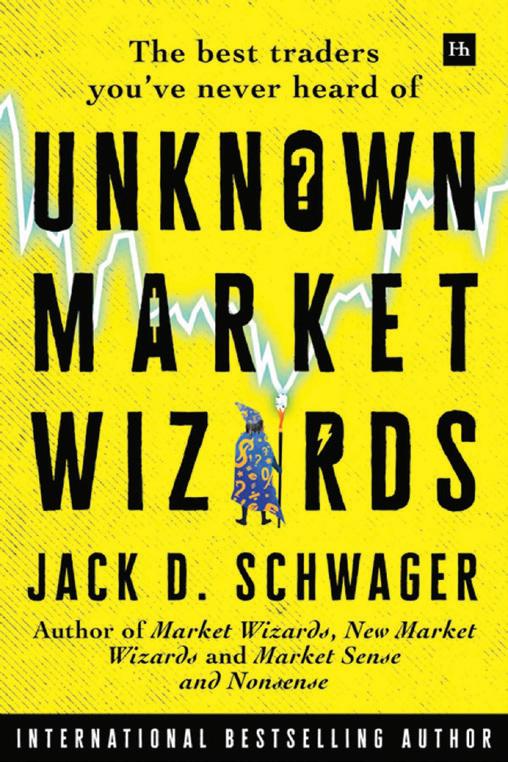
> The New Market Wizards: Conversations with America’s Top Traders (1992)
> Stock Market Wizards: Interviews with America’s Top Stock Traders (2001)
> Hedge Fund Market Wizards: How Winning Traders Win (2012)
> Market Wizards Updated: Interviews with Top Traders (2012)
> The Little Book of Market Wizards: Lessons From the Greatest Traders (2014)
> Unknown Market Wizards: The Best Traders You’ve Never Heard Of (2020)
He’s also a fan of the five books in the Incerto series by Nassim Nicholas Taleb:
> Fooled by Randomness: The Hidden Role of Chance in Life and in the Markets (2001)
> The Black Swan: The Impact of the Highly Improbable (2007)
> The Bed of Procrustes: Philosophical and Practical Aphorisms (2010)
> Antifragile: Things That Gain from Disorder (2012)
> Skin in the Game: Hidden Asymmetries in Daily Life (2017)
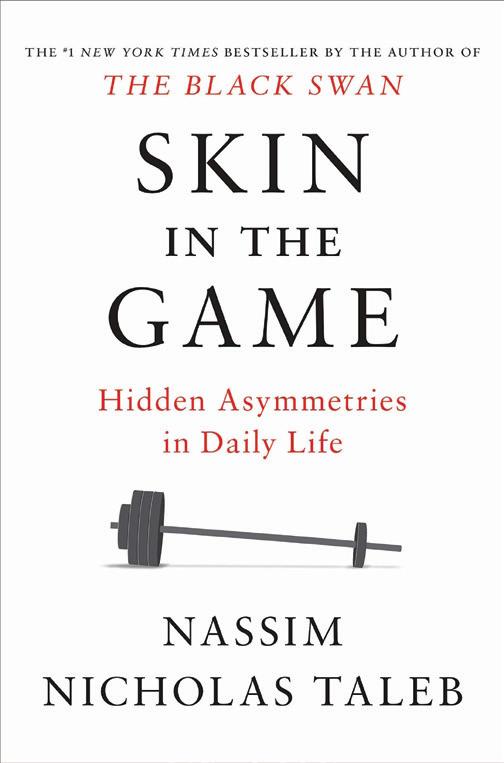
Taleb’s books inspired Dao to discover antifragile trading—the neutral strategies that make money regardless of what happens.
“Heads I win, tails I win—simple as that,” he says of the antifragile approach. “That’s how I was able to turn a small amount of money into a fortune.”

AS HE LEARNS TRADING, A TEENAGER IS ALREADY STOCKPILING FINANCIAL WISDOM—AND CASH
BY ELIZABETH OWENS-SCHIELEn the case of 18-year-old Jacob Intrator, youth isn’t wasted on the young. While learning to trade equities, he’s increased his nest egg nine-fold in four years.
Not many 14-year-olds pick up Burton G. Malkiel’s A Random Walk Down Wall Street to study the markets, but Intrator says the book changed his life. He also became a follower of the tastylive financial network, where he gained valuable insights on financial markets.
It all started with his eighth-grade macroeconomics class. Homeschooled in Miami throughout high school, Intrator, a triplet with two sisters, set up his own course of study.
He became fascinated with the theoretical mechanics of pure economics, as well as how personal decisions play a role in behavioral economics. So, he devised a plan.
“I love math,” Intrator said, “so I built a quantitative trading system.”
He spent hundreds and eventually thousands of hours conducting research, back testing, analyzing trends and modeling. Although he won’t reveal the details of his proprietary system, he can share how he got there.
“I eventually found something in ticker symbols OILD and OILU, which were oil exchange-traded funds (ETFs) and are now extinct,” he said.
ILLUSTRATION BY MARK MATCHOI LOVE MATH, SO I BUILT A QUANTITATIVE TRADING SYSTEM.
Intrator dove into the market, investing his first $4,500.
“I had a blowup and I lost 11% of that— $500—on my first trade,” he said. “My first drawdown taught me perseverance and to fight through the hardships.”

So, he kept at it, eventually growing his capital to $15,000 until another setback struck.
“I was confident my system was working,” Intrator said.

He eventually stopped trading oil ETFs because they became too volatile. He turned to small and mid-cap equities because he liked the pricing structure.
“With small caps, I could risk less money, which made me sleep better at night and still have very good returns,” he said.
This spread trading, as veteran tastylive investor Tom Sosnoff called it during his own interview with Intrator, contributed to growing his nest egg from $4,500 to $41,300.
For the first three years, Intrator said he made around 600 trades, an average of about 15 a month. But during the last year, he’s only made about six trades.
Although he didn’t touch meme stocks, he has explored cannabis equities in what’s known as a sympathy-sector play. It’s called that because the stocks in the group move together in price as a reaction to news or
market events. The cannabis sector often experiences sharp volatility.
For now, Intrator is managing his own portfolio and is up 3.5% this year, thanks to his models which positioned him in a risk-off stance.
He has found great success investing in Guardion Health Sciences (GHSI), adding $6,000 to his own assets and another $2,000 to his family’s portfolio.
He’s also serving as an intern to U.S. Rep. Josh Gottheimer, a Democrat representing the Fifth District of New Jersey.
Intrator, who runs a non-profit foundation promoting financial literacy among American youth, earned a 1540 on his SAT.
He hopes to attend The Wharton School of Business at the University of Pennsylvania, or another university of that caliber.
But what’s his long-term goal? “Run a hedge fund.”
400 communities across the country, and more than 20 additional sites are in the works.
n enthusiastic gardener who hates to bake might be a perfect candidate for “timebanking,” an international movement whose members swap time and skill instead of shelling out cash for what they need.
For every hour timebankers spend performing a service, they’re eligible to receive an hour of work in return from another member. Everyone’s time has equal value in the eyes of the organization, whether it’s spent patching a leaky roof or raking autumn leaves.
Exchanging labor beats volunteering because it strengthens self-worth by making members feel their time has value, says Christine Gray, one of the founders of timebanking.
“Getting things for free can actually undermine your sense of capacity,” Gray maintains. Members of timebanking organizations don’t feel they’re getting handouts, even though they’re not paying for goods and services, she says.
Gray helped create timebanking with her late husband, Edgar S. Cahn, a law professor, speechwriter for Robert F. Kennedy and co-founder of the Antioch School of Law. They described the idea in an article published in the 1980s by the Stanford Social Innovation Review, a magazine and website.
The couple went on to start TimeBanks USA, which has now become TimeBanks.Org. It’s active in more than
Local organizations operate autonomously, making some of their own rules and setting many of their own policies, says BJ Andryusky, founder of one of those local groups, the St. Pete Timebanks in St. Petersburg, Florida.
Calculating the value of the work performed by members at $29.95 an hour, timebanking has contributed at least $104.6 million to the economy. But members emphasize that the accounting is loose and thus greatly undervalues the group’s contribution.
Timebankers view their movement as neither bartering nor volunteering. Instead, they think of it as an entity that produces a non-taxable currency called “time credits.”
Let’s share the adventures of some imaginary characters to get a better understanding of timebanking.
Suppose Abby, an avid gardener, joins a local timebank. Another member, Greg, needs help planting tulips in his backyard. Abby works with Greg for one hour and logs one time credit into her timebank account, which removes one time credit from Greg’s account.
A little later, Abby needs help putting up a fence post. Maria spends two hours helping Abby with the fence and logs two time credits, which come from Abby’s account.
Next, Maria decides she wants to use Mason jars to make candles. Frank has plenty of them, and the two agree 12 jars equal one time credit. Maria spends one time credit to obtain a dozen jars, and Frank gains one when he hands over the jars.
Every time credit has the same worth, regardless of the task performed—a proposition that stumps some economists, Andryusky notes. It means the labor of a highschool student who bags groceries is an even trade for the work of a skilled tax preparer.
With “real world” currency, it doesn’t work that way. A skilled tax preparer makes $30 an hour, while someone grilling burgers in a fast-food joint might barely make minimum wage.
“Societal value is what separates income,” Andryusky says, “And we don’t live in an egalitarian society.”
But time credits mean more than the everyday type of money everyone always exchanges, according to Gray. She quotes a beer ad from the 1970s to make her point.
“Heineken refreshes the parts other beers cannot reach,” she says. That parallels the notion that time credits have more dimensions than mere dollars and cents can provide. “This currency reaches the parts that other currencies can’t,” she says.
Besides promoting self-worth, timebanking makes a formidable contribution to communities, as noted on hOurworld (not a typo), a platform that logs timebanking hours across the world. Nearly 3.5 million hours had been exchanged when Luckbox went to press.
But the actual number of hours traded is probably much greater. “People use the software and then they get sort of lazy about it,” Gray says. “They continue to exchange, but it doesn’t matter because it’s about the premise behind it.”
The finances vary among local timebanking operations. St. Pete Timebank, for example, received a grant for 2020 that provided $5,000 for software, $2,500 to cover liability insurance and $4,000 to bankroll leadership training, among many other expenses, Andryusky says.
Each timebank operates on its own, down to the point of deciding how to capitalize timebank, Timebank or TimeBank. Some use software from TimeBanks.Org called Community Weaver, which costs between $1,200 to $5,000, depending on the year, while other local organizations rely on hOurworld software.
With either software provider, users can log time credits and post proposed exchanges. Both sets of software differentiate between the all-important timebanking ideas of giving and receiving.
Differences among local organizations don’t end with the software. Because they’re autonomous, some charge membership fees
and others don’t. Avoiding that fee can force them to solicit donations—just to keep the lights turned on.
Gray summarizes the necessity of finding funding this way: “How does the airplane keep flying without any fuel?”
One of the nation’s largest timebanks, Crooked River Alliance of TimeBanks in Kent, Ohio, relies on donations, says Heather Waltz, who serves as chair. But in a world where money and culture intertwine, even timebanks aren’t sustainable without cash.
“Membership to our timebank is free for all,” Waltz says, “but we ask anyone who is willing to, to donate towards our costs. This and our fundraisers allow us to continue to make the timebank free.”
Local timebanks and TimeBanks.Org rely on boards of directors who earn time credits for their administrative work.
Timebanking has been around nearly 40 years but has never grown as quickly as Gray and Cahn had hoped.
In 1992, the movement bloomed but then crashed. “There were thousands of people wanting to start up timebanks,” Gray says of those days.
Gray and Cahn went international with timebanking in 1998, spurring what Gray dubbed a renaissance. The phenomenon quickly gained momentum in the United Kingdom.
Later, she began telephoning timebankers on a list of about 100 timebanks. “I called everyone on the list and about 30 responded,” she remembers. “Some of them were very healthy and some were struggling.”
Now, timebanking is surging again. Twenty-three new local organizations are pending timebanks in cities ranging from San Diego to Philadelphia to Gary, Indiana. As timebanks grow, local economies flourish, promoters say. “Everyone can benefit from a timebank,” Andyrusky concludes. “It just depends on whether you value your time enough to join.”
EVERYONE’S TIME HAS EQUAL VALUE IN THE EYES OF TIMEBANKERS.

Judging whiskey awards may sound like fun, but after sipping dozens over a couple of hours it becomes harder for any one spirit to impress your taste buds.
My first exposure to Garrison Brothers Whiskey Distillery was as a judge during the blind tasting session at the 2021 Whiskey and Barrel Consumer Choice Awards.

The half-ounce pour provoked my palette enough that I later inquired as to the name of the anonymous spirit. It turned out to be Garrison’s Double-Oaked Balmorhea Texas Straight Bourbon Whiskey—a mouthful in more ways than one.
Balmorhea is a true Texas whiskey—a grain-based distilled spirit produced and aged entirely within the borders of the Lone Star State.
And like Texas, Balmorhea is big. It’s a 115 proof whiskey boasting a big flavor profile.

Bold notes of amaretto, fudge, pecan and coffee emerge after aging five years in the warm Texas climate before bottling at barrel strength.
awards, including the coveted title of American Micro Whiskey of the Year from Jim Murray’s annual Whiskey Bible magazine

But this is not everyman’s whiskey. The flavors are so bold that I routinely find several drops of distilled or deionized water (or dare I say, an ice cube) are necessary to reduce Balmorhea to drinking strength.
Master distiller Donnis Todd unapologetically describes Balmorhea as “bourbon candy in a bottle.”
Since its initial release in 2017, Balmorhea has won more than 50
Counterintuitively, whiskey lovers may find the 134.8-proof Garrison Brothers Cowboy Bourbon inexplicably more approachable. Somehow, the cacao chocolate, molasses, carob, brown sugar and date flavors overpower its high proof. This year’s 9,600-bottle release is exceptionally good. Every barrel in this release was at least eight years old.
Above:
Today’s sky-high used car prices can’t last forever. Experts expect a reset—but at a level still painfully higher than before the pandemic.
“There’s talk about prices declining,” confirms Charlie Chesbrough, senior economist at Cox Automotive, a company with multiple brands in the automotive industry, including Autotrader and Kelley Blue Book.
But don’t get overexcited. “It seems very difficult to see them shifting anywhere back to where they were pre-COVID,” Chesbrough warns.
How bad has it been? Well, the average price of a used vehicle sold by a new-car dealership leaped from $21,210 in 2020 to $30,800 in 2022—an astounding 45% increase, according to the National Automobile Dealers Association.

Place the blame for the rocky used-car market at least partly on what’s been happening with new cars, Chesbrough said. Pandemic-induced microchip shortages limited production, thus raising prices for the few
vehicles manufacturers managed to build. Many new cars sold for more than their sticker price—a nearly unprecedented trend.
“The industry is trying to come back from a very difficult couple of years with very lean inventories,” he said “There’s a lot of folks out there that wanted to buy vehicles but haven’t been able to because of the chip shortage.”
High prices for new cars drove many consumers to consider buying used vehicles. The increased demand for second- or third-hand cars naturally drove up prices in the pre-owned market.
What’s more, the limited selection of new vehicles also encouraged shoppers to turn to used vehicles for the options and features they wanted. Why settle for a new rear-wheeldrive SUV in the wrong color when the perfect one-year-old all-wheeldrive version was available?
Inflation in the overall economy didn’t help matters, either. Rising interest rates also muddled the market. And don’t forget that car deal-
It’s not the best time to buy or sell a vehicle.
erships were suffering from the shortage of workers that plagued nearly every sector of the economy.
Dealers readily acknowledged the situation. Fifty-three percent of them cited the economy as a leading factor in the market, according to Cox Automotive.

But a bit of relief from high used-car prices may be on the way.
Used-car prices apparently reached their peak in January 2022, a Bloomberg report said. They then fell 16% by the end of last year and
could decline another 20% this year, according to the news service.
CoPilot, a service that helps consumers make car-buying decisions, put it this way late last year: “Prices are now $8,497 (or 34%) above projected normal levels, a premium that fell by a staggering 9% from July.”
Prices are easing, Chesbrough agreed. “We’re starting to see that the air is being let out of that bubble, and the prices are starting to come back down to earth,” he told Luckbox
Yet, challenges remain.
The depleted inventory of used cars will continue to keep prices high, Chesbrough said.
“We’re still a market that just does not have enough product out there for the people who need personal transportation,” he noted.
Besides the lack of new cars, Chesbrough is seeing a slump in new-car leasing, which has been a significant source of vehicles for the used-car market. That weakness could last through 2025, he said.
“Normally about 30% of all retail sales activity are a lease, but that’s fallen to just about 20% so far in 2022,” Chesbrough said.
About 2.5 million fewer leases will end every year for the next three years, robbing the used marketplace of that inventory, Chesbrough
maintained.
Until now, about 65% of lease customers turned their vehicles back in at the end of the lease. The leasing firms then sold the vehicles at wholesale auctions open only to certified car dealers.

These days, however, consumers who lease vehicles are often exercising their option to buy them at the end of the lease. They’re doing it because the buy-back price agreed upon at the beginning of the lease tends to be much lower than the current pandemic-influenced value.
So, there are headwinds in the used car business, as Chesbrough puts it. Prices are declining a bit now, but limited inventory may soon start another round of price increases.
Let’s look at some actual figures.
Although used-car prices remain high, they’re not flagrantly overvalued because their quality is at least as good as it’s ever been, Chesbrough said.
The average price for used vehicles purchased at franchised new-car dealerships in September 2022 was $31,025, according to the J.D. Power research firm.
That was “roughly flat compared to August 2022 but represented an increase of 7.2% compared to September 2021,” researchers said.
But trade-in values have also climbed, said a joint forecast report from J.D. Power and LMC Automotive, a forecast provider. Average trade-in was an estimated $10,381, a 49.2% increase from a year ago.
Meanwhile, new cars are depreciating more slowly. The average fiveyear-old car lost 33.3% of its value from its manufacturer’s suggested retail price, a 17% decrease in depreciation compared to 2021, researchers at iSeeCars found.
There’s talk of used car prices declining, but it’s difficult to see them shifting to pre-COVID levels.
“They’re going to last for 10 years plus,” he said of today’s cars, “and maybe the market actually caught up to what the true value of these vehicles are.”
More specifically, a 12-year-old vehicle that would have sold for $3,700 at a wholesale auction before the pandemic would now bring $6,700, Chesbrough noted.
But for many consumers, the size of their car payment can overshadow concerns about the price, Cox Automotive Chief Economist Jonathan Smoke maintained in an article.

“A $400-a-month car payment is an important target for many mainstream households, as it would consume 10% of the gross income for a household with $50,000 in income,” Smoke said.
That places new cars out of reach for a family living on a tight budget. The payment on a Chevrolet Spark—a tiny, plebeian mode of transportation—would come close to the $400 goal, but adding taxes, tags and title would put it out of reach.
Plus, setting aside the cash for a down payment could prove challenging for consum-
So far, rising interest rates haven’t stopped Americans from taking out car loans, but it could still happen.
“If you look at vehicle sales in both the new and used markets, they haven’t really changed—they have not been disrupted by rising interest rates,” said Charlie Chesbrough, senior economist at Cox Automotive, publisher of Autotrader and Kelley Blue Book
However, the current strong demand for vehicles could weaken, possibly because of the high cost of borrowing.
As Luckbox was going to press, interest rates averaged 4.07% for new car loans and 8.62% for used cars, according to Car and Driver magazine.
“The issue the industry is now dealing with is whether these interest rates are going to take away people’s ability to afford these vehicles,” Chesbrough said, adding that “their desire for them remains strong out there.”
ers already struggling to keep food on the table during inflationary times.
On a side note, Chesbrough credited the price increases with changing the way people view the vehicles they already own. They value them more and have become more likely to invest in repairs to keep them on the road instead of replacing them.
“We’ve just changed that equation much more in favor of keeping those vehicles for a longer time,” he said. “And I think it does suggest that used vehicles are going to hold their value longer.”
Perhaps squeezing a few extra miles out of that old beater in the driveway makes sense right now, experts said.
With prices high and selection limited, postponing a purchase only makes sense in many cases, according to Chesbrough. “It’s not the best time to buy or sell a vehicle,” he noted.
Still, there’s no wisdom in throwing good money after bad in an ill-fated attempt to keep a clunker out the auto graveyard. But if trading
The interest lenders charge for car loans is tied to the federal funds rate set by the the Federal Open Markets Committee. It raised the target for the funds rate to 3.75% to 4% last year, up from 0.08% in 2021.
Additional increases seem likely in an attempt to curb inflation, observers agree.
up becomes inevitable, car industry mavens advise modesty.
Instead of investing heavily in the hefty SUVs and enormous pickups that dominate the streets and highways, consumers would be wise to buy small cars, midsize sedans and hatchbacks, according to auto retailer CarMax.
Count on American motorists to go their own way, just the same. As Chesbrough put it: “People want personal transportation, and they’re willing to pay for it.”

Americans are keeping their cars longer. Average
announced. Last year, The Rockhound got four predictions right out of seven. Here are the projections for the 65th award ceremony.
By Kendall PolidoriNOMINEES:
In These Silent Days (Brandi Carlile) Things Happen That Way (Dr. John) Good to Be (Home Again) (Keb’ Mo’) Raise the Roof (Alison Krauss and Robert Plant)

Just Like That (Bonnie Raitt)
WHO WILL WIN:
In These Silent Days (Brandi Carlile)
WHO SHOULD WIN:
In These Silent Days (Brandi Carlile)
Brandi Carlile hasn’t slowed down this year. From the release of her album, In These Silent Days, and her live concert film, In The Canyon Haze, to headlining shows throughout the year, Carlile is a force to be reckoned with. With seven studio albums, 18 Grammy Award nominations and six wins behind her, In These Silent Days might be her best album yet. She’s a shoo-in.
NOMINEES:
We (Arcade Fire)
Dragon New Warm Mountain I Believe in You (Big Thief) Fossora (Björk) Wet Leg (Wet Leg) Cool It Down (Yeah Yeah Yeahs)
WHO WILL WIN: Wet Leg (Wet Leg)
WHO SHOULD WIN: Dragon New Warm Mountain I Believe in You (Big Thief)

As reported by The Rockhound in the article “Music in 2023” (read the full story at luckboxmagazine.com), Wet Leg has been plowing through the indie scene since 2021. It’s difficult to find someone who doesn’t know Wet Leg, or at least their single Chaise Lounge. While Wet Leg’s debut self-titled album was one of the best to come out of 2022, Big Thief’s Dragon New Warm Mountain I Believe in You is likely 2022’s most underrated album. In terms of songwriting, technique, production and instrumental variety, Big Thief deserves the award for Best Alternative Music Album. Their fifth studio album marks a certain moment of mastery and maturity in their craft.
The Beatles, Stones and Zeppelin were awesome—but rock lives on. Why not break out of the classic rock cocoon and give new rock a chance? Rockhound is here to help. Think of it as a bridge from 1967 to today and beyond.
It’s that time of year again when awards season rolls around. The 2023 Grammy Awards are slated to take place Feb. 5, and the official Grammy nominations have beenBrandi Carlile Big Thief PHOTOGRAPHS: BRANDI CARLILE (GETTY IMAGES); BIG THEIF (JOSH GOLEMAN); TURNSTILE (JIMMY FONTAINE)
NOMINEES:
Black Summer (Red Hot Chili Peppers)
BLACKOUT (Turnstile)
Broken Horses (Brandi Carlile)
Harmonia’s Dream (The War on Drugs)
Patient Number 9 (Ozzy Osbourne featuring Jeff Beck)
WHO WILL WIN: Black Summer (Red Hot Chili Peppers)
WHO SHOULD WIN: BLACKOUT (Turnstile)
This is a case where classic rockers Red Hot Chili Peppers will win because they reunited with guitarist John Frusciante and released an album reminiscent of the band’s best music with him during the ‘90s. Black Summer is good for a Red Hot Chili Peppers song, but Turnstile’s BLACKOUT represents a more modern take on where rock is headed. It’s fresh, with slightly more production, and it appeals to a younger generation of rock fans. The band made waves in the industry last year and will tour with Blink-182 this year.

NOMINEES:
Dropout Boogie (The Black Keys)
The Boy Named If (Elvis Costello and The Imposters)
CRAWLER (IDLES)

Mainstream Sellout (Machine Gun Kelly)
Patient Number 9 (Ozzy Osbourne)
Lucifer on the Sofa (Spoon)
WHO WILL WIN: Mainstream Sellout (Machine Gun Kelly)
WHO SHOULD WIN: CRAWLER (IDLES)
Mainstream Sellout is the perfect way to describe Machine Gun Kelly’s latest album. It’s mainstream. The rapper-turned-pop-punk-rocker is one of the nation’s most popular celebrities at the moment and has headlined major festivals including Lollapalooza in Chicago. But, that doesn’t mean his music is necessarily Grammyworthy. Looking deep at the essence of rock music—loud, angsty and instrumentdriven—IDLES should not be ignored. In fact, their music is so captivating it’s impossible to ignore. Their fifth studio album, CRAWLER, is one of the most highenergy and poetically crafted rock albums of the past decade. Their single The Beachland Ballroom is particularly notable. Read The Rockhound’s live review of IDLES at luckboxmagazine.com.
WHO WILL WIN: RENAISSANCE (Beyoncé)
WHO SHOULD WIN: Mr. Morale & The Big Steppers (Kendrick Lamar)

WHO WILL WIN: About Damn Time (Lizzo)
WHO SHOULD WIN: Bad Habit (Steve Lacy)

WHO WILL WIN: Måneskin
WHO SHOULD WIN: Wet Leg
For the first time in 18 years, legendary rockers The Rolling Stones are reportedly set to release a brand new album of original material in 2023.

Band members have been recording tracks in New York for the new album, according to several sources.
The band’s last original album, A Bigger Bang, was released in 2005, and their upcoming album release will be No. 23 in their discography.
It will also be their first album recorded without founding drummer Charlie Watts, who died in 2021. Steve Jordan, American musical director, producer and songwriter, is now in his place.
The band is set to tour the U.S., South America and Europe following the album release.
Kendall Polidori is The Rockhound Luckbox’s resident rock critic. Follow her reviews on Instagram and Twitter @rockhoundlb.



 By Navpreet Dhillon
By Navpreet Dhillon
Cave dwellers were exchanging animal hides and sharp sticks long before the invention of coins and paper money. They were pioneering the barter system—a way of trading that will always be with us.
To place barter in a contemporary context, think of someone itching for a pair of Air Jordans but hurting for cash. How about finding a way to snag those shoes by trading up from a pair of SBs lying around the house?


That can happen with the help of Tradeblock , a revolutionary company that aims to change the market through trade rather than resale. A barter-based sneaker trading platform, Tradeblock enables users to swap shoes for what they consider fair value, using what Tradeblock calls “kicks for currency.”
A lot is at stake. The sneaker resale market was valued at $6 billion in 2021 and is projected to reach $30 billion
by 2030. That’s a 400% increase in eight years and an average increase of 20% year over year, as predicted by Cowen Equity Research.
Both brand popularity and limited availability drive the sneaker resale market, encouraging consumers to buy the shoes for exclusivity and resale instead of to wear.
This rapidly growing market creates intense competition for anyone looking to enter. GOAT, StockX and Grailed have long been the biggest names in the industry, serving as both websites and apps for sneakerheads to buy and sell shoes.
Now, Tradeblock is offering a new tool. While not a true barter system because users can add cash to the trade, Tradeblock represents an original approach to resale.
Childhood friends Mbiyimoh Ghogomu, Darren Smith and Tony Malveaux started Tradeblock in Houston in August 2020. It was valued at $8.9 million as of October
Think of someone itching for a pair of Air Jordans but hurting for cash.
2022 and has more than 250,000 users. Like most other resale sites, Tradeblock charges a base fee of $25 for each trade and adds $10 per additional pair. For example, someone trading three pairs of shoes (the maximum allowed) would pay $45.
Super-trader Rob A., who goes by KreweDeJawn, joined at the start and has completed over 180 trades. “The great thing about Tradeblock that I think some other traders are missing is that it’s not a replacement to the resale marketplace,” Rob says. “Rather, it is another tool in the collector’s toolbelt to be used in conjunction with the resale marketplace.”
The right strategy pays off in shoe bartering, Rob maintains. “Think about making trades for pairs that you might not want personally but are easy to flip for the capital you need to get the pairs you want,” he recommends.
On Tradeblock, exchanges may
not be equal in monetary value, but they could be tactical when thinking of future trades. Rob likes to think many trades ahead and be willing to part with anything for the right shoe. But what feels right now may even-
British Khaki, Nike SB High Strawberry Cough and Jordan 1 Travis Scott High Mochas. In hindsight, he was robbed. “Those Chunky Dunkys feel like a gaping hole in my collection that I really wish I could get back,” Rob says.
The Chunky Dunkys, one of the most sought-after shoes, resell for more than $3,600 on StockX after retailing for $100. Yikes. Even without considering the Nike x Ben & Jerry’s collaboration for resale, the Chunky Dunky pair is one anyone would envy and want to include in a personal collection.
tually bring pain. Rob’s biggest trade is his biggest regret: He exchanged the Jordan 4 Bred, Jordan 4 Union Off-Noir and Nike SB Low Chunky Dunky for the Jordan 6 Travis Scott
Even so, Rob keeps trading because the platform brings back the thrill of the hunt. “With the trading high, you can always feel that thrill of landing a really good trade, whether it’s because you landed a pair you’ve been searching for, or you got a trade that’s really in your favor value-wise.”

The sneaker resale market was valued at $6 billion in 2021 and is projected to reach $30 billion by 2030.
An anthropologist reveals how Spotify and other platforms decide what songs to recommend
By Kendall PolidoriSong length
Music genres
Time of day Artist similarity
Nick Seaver was working on his Ph.D. in anthropology when he began looking for the algorithm underlying music recommender systems. After more than a decade of study and interviews, he says there’s no such thing.
Instead, there are many algorithms. “This was a big moment for me in realizing that there are a lot of different ways to approach these systems,” he says. “There are different kinds of algorithms going on in these companies and lots of different recommendation products in any given music streaming service.”
While the systems operate as quickly and efficiently as they do because of artificial intelligence (AI), it’s the engineers—the humans behind these algorithms—who are consistently looking for ways to understand how a system should work on behalf of its users, says Seaver, now an assistant professor at Tufts University.
Their efforts matter because recommendation algorithms are everywhere: TV and movie streaming services, Instagram reel feeds, internet search results—and especially music platforms. It’s impossible to escape them, and no technology can dodge them.
But it’s tough to say exactly what forms the basis for the systems.
“When I asked people working in music recommendation why people like music, they barely ever answered me,” Seaver says. “They would sort of laugh and say, ‘Who knows?’ It’s very hard to say, and they were building [multiple systems], instead of one system, that embodied the theories that they thought were best fit.”
Music streaming platforms, including Spotify, use recommender systems and algorithms to choose songs and artists for users.
They built open-ended systems to capture whatever tastes they could, he continued. They were looking for patterns in whatever kinds of data they could find.
They update recommender systems in a never-ending process Seaver calls “continuous
deployment.” That means at random times, multiple times a day, developers are pushing out new code. Users are never interacting with the same algorithm twice.
Over the years, Seaver has broadened his understanding of the systems by attending conferences and interviewing developers. He even interned at one company. He got a sense of how people in this field were thinking and what they were going to do next.
Recommender systems defined Music recommender systems are based on people’s listening habits. The systems grab data anytime listeners take action on a music app. That goes beyond a user’s profile to include liked songs and saved albums. The systems record how long users listened to a song, what songs they’ve skipped and which genres they favor.
The systems use collaborative filtering to whittle down the data from user activity and reviews to make personalized recommendations, typically based on what other users with similar habits and tastes are listening to.
In October 2021, Luckbox reported on the music platform Spotify and its use of user data to recommend songs and artists. The article stated that “by tracking each song a user plays, what playlists they create or what podcast topics they choose, the platform can understand the mood or mindset of a user at any point in time.”
The article went on to say that “music consumption is personal and intimate, and the ability to understand users’ behavioral data is key for creating Spotify’s personal profiles.” (Read more in Spotify Knows More About You Than Your Taste in Music on luckboxmagazine.com).
Platforms like Spotify use multiple
Algorithms suggest songs based on users’ listening habits, as opposed to musical genre or musical similarities.
Because The Rockhound listens to: Spotify recommends:
n Kurt Vile n My Morning Jacket
n Fleet Foxes n Bon Iver
n Dr. Dog n Shakey Graves
n Taylor Swift n Harry Styles
n Fleetwood Mac n Creedence Clearwater Revival
recommender systems for different recommender categories, including Daily Mixes, Discover Weekly, Artist Radios, Jump Back In, Made For You, Your Top Mixes, Fresh Finds and Uniquely Yours, Seaver says.
“There’s tons of data you can put in there,” he notes. “Did you turn up the volume when a certain song came on? Did you skip a song? Maybe that’s a sign you didn’t like it. Do [platforms] keep showing you this song at the top of a playlist and you never click on it? These things can be implicit signals of your preferences that get used in these systems as guesses about what you like and don’t like.”
Although the systems are not precisely the same on different platforms, they share the goal of making accurate predictions.
The earliest noted work in AI began in the mid-20th century, according to multiple sources. AI research
flourished from 1957 to 1974, as machine learning algorithms improved, and researchers developed a better sense of which algorithms to apply to problems. Many of the goals for AI were achieved during the 1990s and early 2000s.
Today’s recommender systems began appearing in the mid 1990s, Seaver says. Ringo, one of the first, was developed at the Massachusetts Institute of Technology Media Lab. It used collaborative filtering but relied on ratings instead of on listening history.
Early systems used listening habits to rate how much a user liked a certain artist, song or genre. But that began to change around 2010, about the time Seaver began his research.
“It wasn’t obvious that people cared about getting recommendations predicted so precisely,” Seaver says. “There was also a growing availability of interaction data. It suddenly became possible to have a
It’s impossible to escape music recommender systems.
record of literally every song that someone listened to on Spotify, Pandora or whatever platform people use.”
Spotify doesn’t ask users to pick their favorite songs. The system already knows based on data profiles and listening behavior. The systems can also recommend music based on what a listener is doing, such as working out, studying, riding a bike or making dinner.
Pandora was one of the first music services to offer recommendations, primarily through artist radios. Today, the platform tells users why a song or artist is recommended—factors like rhythm, groove or female vocals.
These systems aren’t just for recommending songs. They now compose original music to fit an individual’s tastes and needs.
A company called AIVA (Artificial Intelligence Virtual Artist) is doing exactly that. It has compiled a massive database of music stored in many formats with the goal of creating personalized compositions and playlists for artists and consumers.
The AIVA system knows every chord and note, including pace and rhythm. It searches for patterns to understand the basic style of the music. Then the system predicts which notes and chords should come next.
AIVA started with classical music compositions for orchestras but later created original rock and pop music. It determines notes and chords, but the music is still performed by real people.
The system’s plagiarism tracker detects notes that may already be under copyright, so there’s little
room for duplication. Ashkhen Zakharyan, head of customer development at AIVA, says the AI systems are based on stochastic algorithms, “meaning that the likelihood of AIVA generating exactly the same
they want and shape them according to their taste, needs and skills.”
AIVA can fill gaps where artist bandwidth is limited. In one example, it can write hours of original music at a much faster pace than any human. But how does that affect human composers and the people who listen to the music?
“It’s true that a lot of people’s music listening has been sort of enclosed within these systems,” Seaver says. “Our tastes in music are absolutely tied up in the technologies that we have, and our basic idea of what taste is, is wrapped up in the idea of selecting among audio recordings.”

Some listeners are trying to minimize the data footprint on music platforms, Seaver notes. The desire for data privacy could eventually restrict information collection on the platforms, he says.
composition twice is practically impossible when trained properly.”
The AIVA AI’s musical ear recognizes whether a composition is good or bad. It creates compositions for a full orchestra and can read scripts for games or movies to discern emotion and map it into music.
“AIVA can supercharge the creativity of composers,” Zakharyan says. “Those who face writer’s block and feel stuck can get a quick start with AIVA, generate several fresh ideas and take them wherever
Seaver’s book Computing Taste: Algorithms and the Makers of Music Recommendation was released in December and describes his findings on recommender systems and the developers behind the algorithms. He concludes there’s no way to base predictions solely on how music sounds—there are multiple theories of taste and they are ever-changing.

In his book, Seaver puts it this way: “As the makers of music recommendation work, they make choices and bring in ideas that structure the open plan. These choices affect what people hear; they alter the circulation of music; they change what it means to have taste in a world filled with computers.”
More Rockhound Spotify playlist
Spotify doesn’t ask users to pick their favorite songs ... it already knows.
Bloody marys, a common antidote to hangovers, grant mixologists a free hand to create cocktails with a wide range of flavors and garnishes.
It’s the kind of drink you can top with bacon-wrapped shrimp, fresh mozzarella, seasonal vegetables and a whole roasted chicken—and still order an entree for dinner. That’s an actual $45 drink called the barn yard at Farmer’s Table in La Mesa, California.

Bloody marys can also be simple. At their most basic, bloody marys contain a tomato juice base with a spirit of your choice—typically vodka.
The libation’s origin is shrouded in mystery. Some say it was named for a woman named Mary who worked in a Chicago saloon called The Bucket of Blood. Others interpret the name as a nod to Queen Mary I of England, who was known for brutal executions.
But Fernand Petiot, a bartender who worked at Harry’s New York Bar in Paris in the 1920s, is often cited as the originator. Petiot also is said to have introduced the drink in New York after Prohibition. He reportedly added horseradish, Tabasco sauce, lemon juice and celery salt to the tomato juice cocktail.
The cocktail lends itself to cultural appropriations. There’s the Bloody Michelada, which substitutes lager for vodka; the Bloody Maria, which uses tequila; and the Cubanito, which has rum.
The Bull Shot is made with concentrated beef broth, the Bloody Joe is based on Scotch whisky and the Asian Mary contains wasabi, ginger and soy sauce.
Two editors in Montreal came up with Trivial Pursuit on Dec. 15, 1979, after they lost too many of their Scrabble tiles. Their new game hit the market in Canada in 1981, and it’s been a runaway hit ever since.
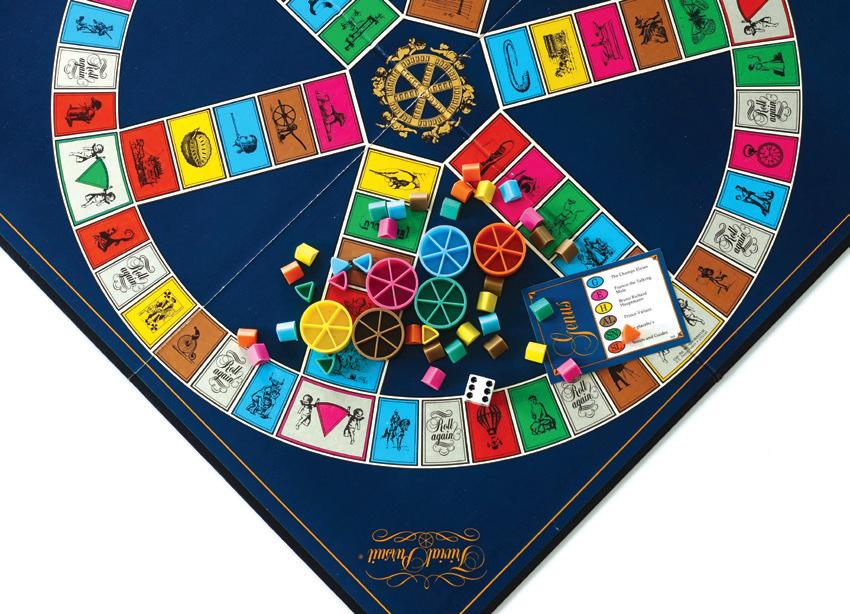
Trivia fanatics in 26 countries have bought more than 100 million copies of the game in 17 languages. It’s the eighth best-selling game of all time, and it’s now available in 50 different editions.
Hasbro owns Trivial Pursuit now and has compiled a list of the game’s all-time hardest questions. How many can you answer? (Find the answers to the far left.)
1. Who was the official hair consultant to the 1984 Los Angeles Olympics?
2. What is the scientific name for a rabbit’s tail?
3. Who played bass for the Beatles for four shows in December 1960?
4. How many rings make up one arm of the Michelin Man?
5. What amphibian did Pliny the Elder suggest be tied to the jaw to make teeth firmer?

X Peng (XPEV), an electric vehicle manufacturer in China, had a candlestick best friend breakout move Nov. 30 after reporting healthy third quarter earnings and providing strong guidance for the fourth quarter.
Sales grew 19.3% in the third quarter for the company, which controls an 8% share of China’s passenger electric vehicle market. Production is projected to double from 100,000 vehicles in 2022 to 200,000 this year.
To handle that growth and prepare for more, XPeng is building two more plants to take capacity to 400,000.
The company’s technology leadership has positioned it to accommodate China’s aggressive electric vehicle mandates.
The earnings report activated brokerage upgrades to $18-$20. The best friend candlestick signal indicates strong investor sentiment that usually produces a sustained uptrend.


Candlestick trading signals and patterns are based on an infinitely valuable commodity—human nature. Think of them as the graphic depiction of every buying and selling decision investors made during a specific time frame.
They’re as effective on a one-minute chart as on a monthly chart. They produce a powerful trade setup strategy for active investors who want fast and accurate results.


The doji, one of the most-recognized candlestick signals, is produced when prices open and close at approximately the same level during a particular period. This signal underscores the indecision between the bulls and the bears and produces extremely powerful price move expectations.
The doji rule states that a price usually moves in the direction of the opening price after a doji. That produces the high-probability trade setup called the doji sandwich
Many consider the doji sandwich signal an indication of the high probability of a positive trade. The Gibraltar Industries (ROCK) chart shows how to recognize this strong day-trade setup.
Note that Day 1 produces a strong bullish candle. (This analysis is relevant on a one-minute chart, 10-minute chart or hourly chart.) The positive trading, Day 2 of a doji, would confirm the bullish trend but not with any decisiveness. Simple candlestick scanning techniques enable investors to identify the trade setup.
On a positive open, the candle after the doji is usually of the same magnitude as the candle before it. This price movement suggests day traders should enter the trade immediately to maximize profit potential.
Stephen W. Bigalow, a veteran of 45 years of trading, directs a candlestick analysis learning forum at candlestickforum.com.
Some active investors start their trading day with this breakfast of trading champions
Candlestick trading signals and patterns produce a powerful trade setup strategy for active investors.
The 17
dojis sandwiched between the 18
19
20
21
22 Day 1 Day 3 24 31 06 14 21 26 05 12 19 26 Sept Oct 01 01
2022
Gibraltar Industries (ROCK)
By Stephen W. Bigalow
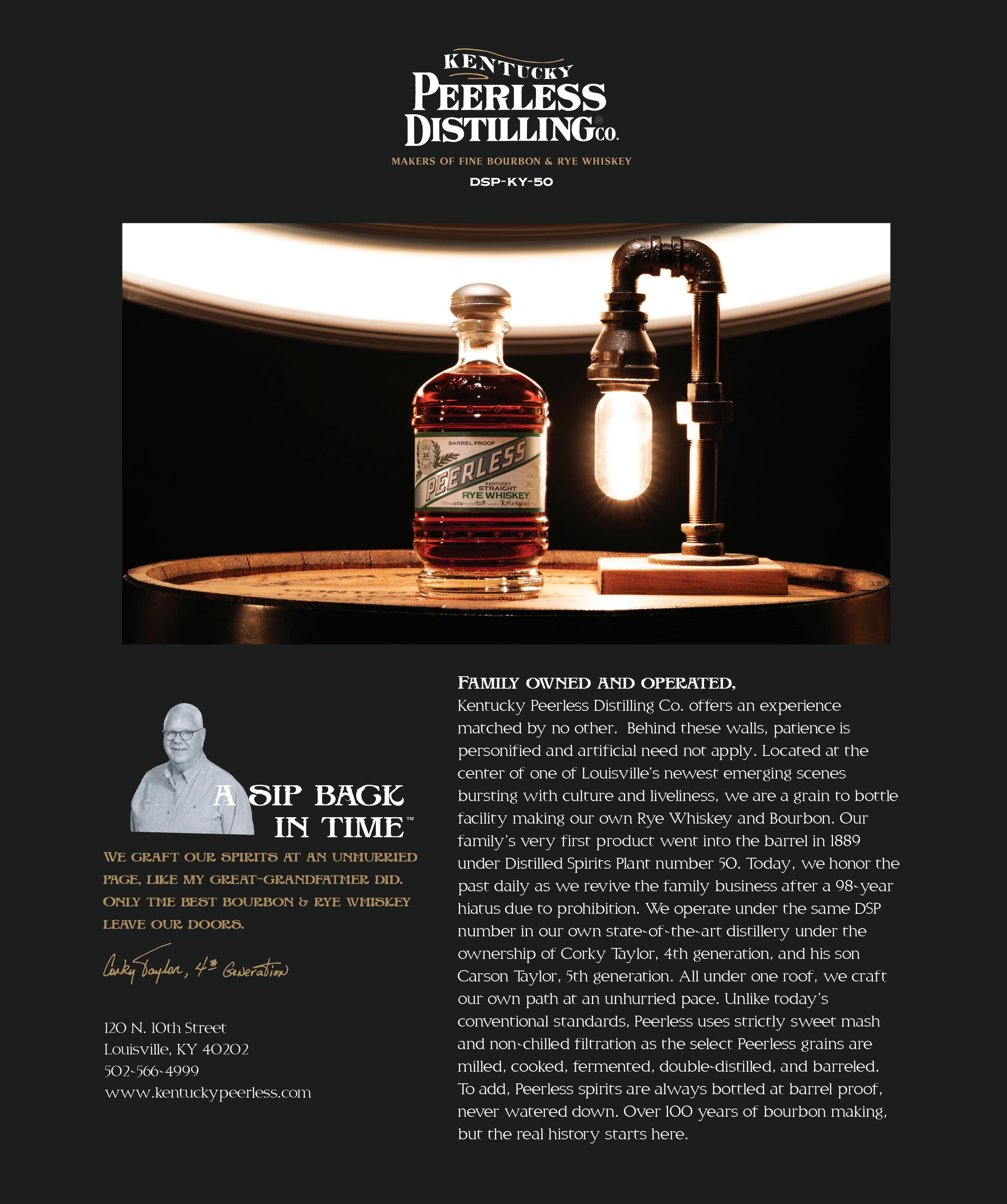
Everyone’s morning routine differs—some start with coffee, some walk the dog. A daily trading routine is no different. But following these five best practices before the market opens will help you prepare for your trading day.
Check the headlines. While many investors place trades without regard for what’s in the news, global headline macro economic events can set the tone for any given trading day.
Huge drops in Chinese gross domestic product, for example, have ripple effects throughout the global economy and often influence the stock markets.
Reports of slower consumer spending typically hurt retail stocks. Keeping tabs on global financial news makes for a more informed trader and may spark ideas for potential opportunity.
Check the futures market. While many traders are adding futures products to their trading arsenal, others use them as a barometer for how the market is moving overnight and how it will open that morning.
While there are futures for everything from metals to bonds, equity-focused traders can follow four key futures that track the major indices.
Check portfolio movers. It’s important to anticipate how a portfolio is likely to move on any given day. The overall movement in the Nasdaq-100 often shows traders how their portfolios will move if they’re long shares in technology companies. However, traders with a wider mix of positions or those who trade options on stocks or funds will want to check their specific movements to gauge what positions need closer attention at the market open. Check the bid-ask prices compared to the prior day’s close to see how a stock is projected to move on the open.

Check earnings, dividends and events. A company’s events can trigger large movements for its stock and underlying options, but can also create opportunity. Setting up an online watchlist to include information about earnings, dividends and other scheduled company releases can keep traders informed.
Check for other portfolio and corporate actions. The impact of other corporate actions and possible portfolio actions varies for different types of traders. Consider dividends, for example, which pay cash and can trigger a share purchase, depending upon how shareholders have set up their dividend reinvestment. However, for options traders with short calls, dividends can lead to early assignment, resulting in a delivery of short shares. As expiration draws near, traders who want to hold the same options position should roll them to the next cycle, so checking positions with only a few days to expiration is key.
Intermediate to advanced An algorithmic trade-hunting system that focuses on strategic premium-collecting strategies. Timely trades are focused on active stocks and ETFs with robust options markets. Three emails per week.
SIGN UP AT QUIETFOUNDATION.COM/ALPHABOOST






CRYPTO
Basic to intermediate
A quantitative newsletter on the markets from tastylive’s research department. Each week, the team discovers new opportunities and trade ideas. Also a quarterly earnings edition. Every Tuesday.
SIGN UP AT TASTYLIVE.COM/CHERRY-PICKS

Intermediate to advanced Backtest your stock option trade strategies. You can see how well they would perform historically by providing insight into the average profit/loss, the win rate and the maximum loss that the strategies saw, along with other metrics. In addition, lookback allows you to forecast the potential profit and loss before you enter a trade, so you can better understand how changes in price and time impact potential positions.
VISIT TASTYLIVE.COM/LOOKBACK
STOCKS/ETFS, OPTIONS, FUTURES & CRYPTO Basic to intermediate Premarket analysis direct to your inbox! Daily analysis before the opening bell. tastylive co-founder Tom Sosnoff kicks off every week followed by chief quantitative strategist Tom Preston. Five emails per week.
SIGN UP AT TASTYLIVE.COM/NEWSLETTERS
Basic to intermediate Options? Futures? Implied volatility? This essential knowledge platform provides comprehensive online courses that teach the crucial concepts, strategies and mechanics that make successful traders.
VISIT TASTYLIVE.COM/LEARN
STOCKS/ETFS, OPTIONS, FUTURES, CRYPTO & FOREX
Basic to advanced
Sixty hours of live, educational, yet often irreverent, original programming each week. More than 20 on-air traders provide financial information, investment strategies and entertainment related to stock and options trading. Actionable information rooted in research and experience.
VISIT TASTYLIVE.COM


Hedge fund managers and other big investors have been using futures to reduce risk for years, but until recently the size of these products has prevented smaller investors from taking advantage of them.
Not anymore. Now, futures have become available to even the smallest accounts.
Suppose an investor owns $40,000 worth of largecap stocks and would like to reduce some of the daily volatility. The market seems uncertain in the short term, so the investor would like to reduce risk but doesn’t want to sell some of the stock.
To hedge half the position, sell 1 /MES contract. At the current level of 3935, selling 1 /MES would hedge $19,810 worth of stock. Because only half of the position is hedged, the investor is still participating if the stock rises. Investors can also use futures to hedge positions they hold outside their account. For example, some might own precious metals, such as gold and silver.
Let’s assume an investor has stockpiled a combination of gold and silver worth $60,000 and wants to reduce risk for a short period of time without selling the metal.
Because gold and silver have a consistently high correlation, 0.80 over the last ten years, the investor may wish to sell a gold future to hedge the physical portfolio.
At a current price of $1,810 per ounce, an E Micro Gold contract (/MGC) would hedge $18,100 worth of gold and, theoretically, 30% of the precious metals.
Keep in mind that if gold and silver appreciate, the trading account with the future would show a loss, but the metals themselves would gain in value.
Precious metals aside, choosing the right futures contract depends on what’s in the portfolio. The table to the right offers advice on picking the right ones.
Keep the buying power requirement in mind. Hedging requires putting a bit of additional money into the account.
Long $40,000 shares of stocks
Short one $19,810 of /MES Unhedged $20,190 of stock
of positions
Own $60,000 of physical gold and silver
Short one $18,100 of /MGC Unhedged $41,900 physical precious metals
courtesy of courtesy of
Symbol Description Notional sizes Buying power requirement Best to be used to hedge a portfolio…
/M2K Micro E Mini Russell $9,036 $797.50 heavy in small cap stocks
/MES Micro E Mini S&P $19,810 $1,458.00 heavy in large cap stocks
/MNQ Micro E Mini Nasdaq $23,305 $2,172.50 heavy in tech stocks
/MYM Micro E Mini Dow $16,866 $1,031.25 heavy in Dow stocks



/MGC E Micro Gold $18,107 $866.25 heavy in gold
/SIL Micro Silver $23,717 $2,337.50 heavy in silver
/MCL Micro Crude Oil $7,050 $1,155.50 heavy in oil
courtesy of
In futures, notional value is the value of the contract at its current price.
Of the many changes that shook the stock market in 2022, perhaps the biggest was that it was allowed to become a market again.
It happened when the Federal Reserve stepped away from “accommodation”—the policy of keeping interest rates low to spur economic growth and keep unemployment low.
In abandoning that approach, the Fed also caused the high correlation among all asset classes to fall away. That made it more of a stock picker’s market than it had been in years.
Some sectors were weak, some were strong and some were in between. But the point is that instead of everything moving together in the same direction, individual stocks began to take on personalities again. In turn, they became much more amenable to examination with classic technical analysis.
Let’s review three trades that share common characteristics:
• The stocks are nominally expensive. In other words, they’re not $3 stocks but aren’t in the high double digits or the triple digits—with plenty of room to fall.
• They are, in a fundamental sense, very richly valued.
• They have an extremely large and well-formed top, suggesting a substantial price drop in 2023.
A simple short-sale would be one way to go about this, but buying long-dated puts would have much greater potential for percentage gains.
Note that all three stocks already had tremendous price drops since their peaks. Some might interpret that to mean the stocks are “on sale” or don’t have much more room to fall.
What these charts suggest is that the stocks aren’t bargains. They have the potential to turn an already substantial fall in price into a cataclysmic one. They just need enough time to erode—which depends largely on the direction of the stock market in general.
MongoDB was founded in 2007 and had its initial public offering in October 2017. In its first four years as a public company, it was an exceptional performer, rising literally thousands of percentage points in price.
From 2020 to 2022, however, an enormous topping pattern formed, with the high price at about $585 and the base of the pattern at about $213, suggesting a spread of $372. For a stock priced at about $150 in late 2022, a topping pattern with a $372 price range is staggering.
The company has no price-to-earnings (P/E) ratio, because it has no earnings. Instead, the company presently loses hundreds of millions of dollars each year.
Between the lifetime low of $24.62 (which was not long after its initial public offering) and recent price levels, there’s little in the way of meaningful price support.
So, unless the company’s fundamentals improve radically, it’s possible this stock will continue “bleeding out” to lower prices, especially if the market in general remains weak.
ServiceNOW was founded in 2003 to develop what the company calls “a cloud computing platform to help companies manage digital workflows for enterprise operations.” (Whatever that means).
Although the company is profitable, its P/E ratio is an eye-popping 403. As with MongoDB, ServiceNOW had an absolutely astonishing run-up in price, rising nearly 30-fold in eight years.
Yet, also like MongoDB, ServiceNOW has hammered out a tremendous topping pattern with a base at about $434 and a peak of about
Splunk has been developing a topping pattern for half a decade—an extraordinarily long time.
$708, indicating a price spread of about $274.
The topping pattern, also similar to MongoDB’s, is a full two years wide. It’s very large vertically (with respect to price) as well as horizontally (time).
The third trade idea centers on Splunk, yet another cloud-based high-tech firm. Like MongoDB, it has no “E” (earnings) with which to calculate a P/E.
Indeed, the losses at this organization are measured not in the hundreds of millions of dollars, but in the billions. In spite of that, the company has an enormous market cap.
What’s notable about Splunk is the size of the
top, which is five years wide. That’s an extraordinary amount of time for any security to be developing a topping pattern. It suggests that while the fall may be tremendous, it could also be slow in coming.
The stock peaked at about $225 and has a base to the top of about $95, suggesting a $130 price spread to the pattern.
slopecharts.com
The stock is presently valued at about the same price it was eight years ago, and it doesn’t have a long enough history to illustrate whether or not it has a propensity to fall significantly after a major top. The width, height and quality of the topping pattern is hard to deny, however.
With all three of these trade ideas, the key word is “patience” because the kind of price move required to make a spectacular return on owning puts might take many months.
The chief ally in these trade ideas, however, is that price tops of this size will be subjected to a stupendous amount of gravity because overhead supply will persistently hamper attempts to push the price higher.
If the market is relatively weak in 2023, or even if it’s fairly flat, there’s a high probability all three of the stocks will be much lower in price by the end of the year. Given the dollar amount that these expensive stocks might move, the risk/reward ratio of owning longdated puts seems tantalizing.
Tim Knight has used technical analysis to trade the equity and options markets for decades. He founded Prophet Financial Systems and created the website slopecharts.com, which offers free access to his charting platform.
@slopeofhope
If the market is flat or relatively weak, these three stocks may be much lower in price by the end of 2023.
These three trade ideas require patience—a strong return might take months.
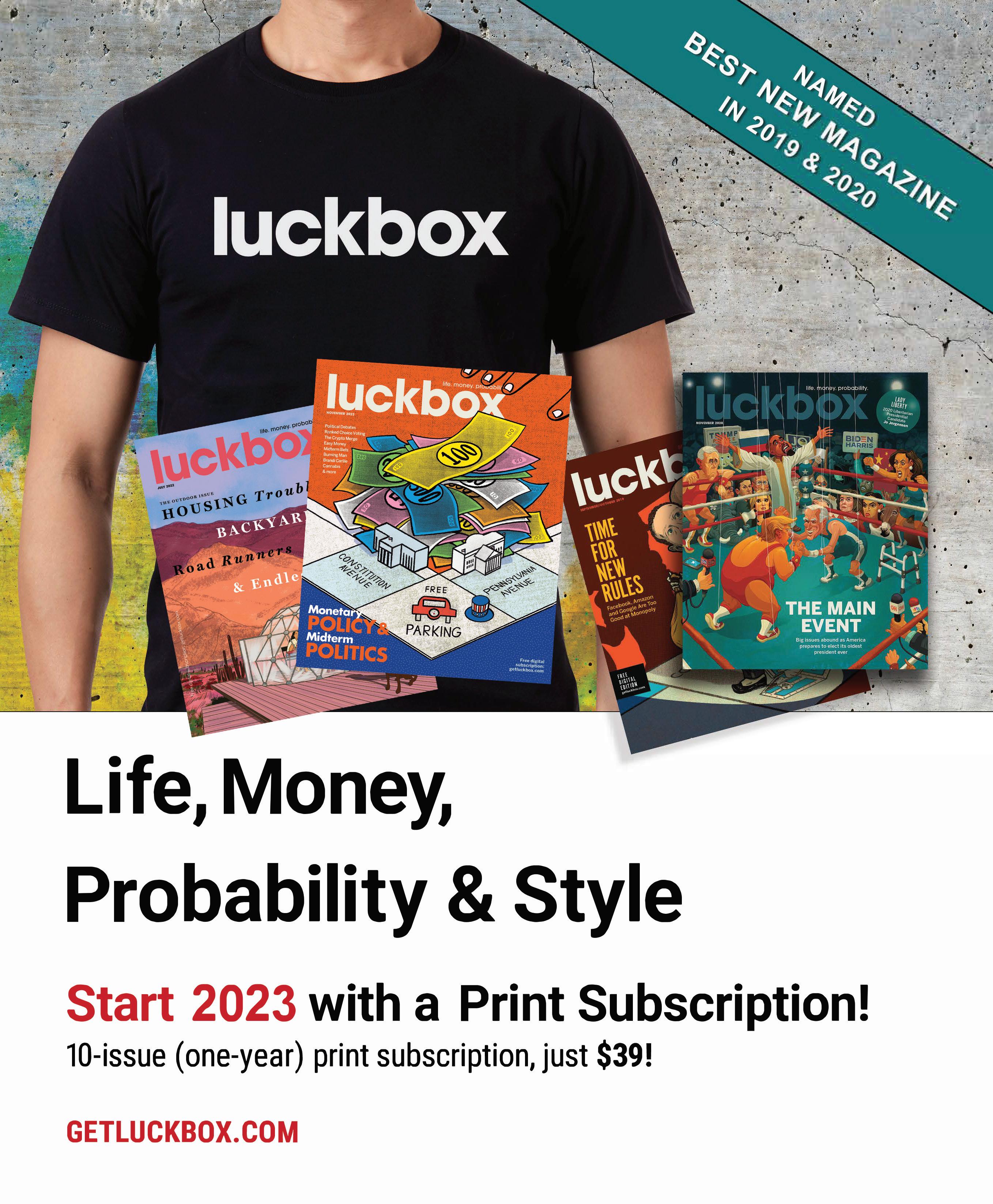 NORMAL DEVIATE
NORMAL DEVIATE
The phrase “active trading” might suggest a wild-eyed investor screaming “Buy! Sell! Buy! Sell!” But now that most stock and options trading has moved online, the tension has eased and the pace has slowed.
Along the way, the very meaning of active trading has changed. While it used to denote day trading or scalping, it now applies to investing based on probability and statistics.
Active trading can include opening options trades in many symbols over time. Instead of sinking all of one’s capital into one stock or index and hoping it goes up, investors distribute capital and risk among a number of equities—think IBM (IBM), Apple (AAPL), Tesla (TSLA), etc.
Investing over a longer period and using strategies with a higher probability of profit can reduce a portfolio’s volatility and make potential returns more predictable.
The reason is mathematically straightforward. Volatility is another term for standard deviation. Standard deviation is simply the square root of variance. And the calculation for variance is influenced by the number of values in the data set.
Variance is the average of the sum of the squared differences between the individual data points and their average, divided by the number of data points.
This is the formula for variance investors use when working with actual data, where “ xi” are the individual data points, and “x¯ ” is the average of those data points. Also, “n” is the number of data points available. Use “n -1” instead of just “n” because of the statistical concept of “degrees of freedom.”
That’s beyond the scope of this article, but suffice it to say “n-1” is used when working with the average of a sample instead of an unknown population mean.
When the divisor of a fraction is larger, the quotient is smaller, and that’s the case here. The more trades in an active trading strategy, the larger the “n-1” and the smaller the vari-
ance. The standard deviation (volatility) is the square root of variance. So, the lower the variance, the lower the volatility.
Consider a hypothetical strategy using high-probability trades. Assume a trader sells puts with a 70% probability of profit for $2.00 credit. The trade is closed for either a $100 profit or a $200 loss. The $100 profit occurs 70% of the time, and the $200 loss occurs 30% of the time. These are the volatilities (standard deviations) of the profit and loss of making 10, 20 and 100 trades.
Tom Preston Luckbox contributing editor, is the purveyor of all things probability-based and the poster boy for a standard normal deviate. @thetompreston
The lower the variance, the lower the volatility.
So-called professionals sometimes urge novice investors to turn their backs on active trading. Instead, beginners should entrust their money to an adviser or stash it in a mutual fund and leave it there, the pros like to say.
Those passive approaches might work for some, but nothing is stopping investors from taking control of their own fates. Modern financial markets and today’s trading technology enable just about anybody to become an active investor.
Active investors study the markets and develop strategies to make money by buying and selling stocks and options, as opposed to passive investors who simply hold onto stocks and hope their value increases.
What makes more sense? Well, novices don’t have to decide on the spot which type of investor they’d like to become. In fact, they can be a little bit of both.
They can accomplish that duality by opening smaller accounts and using them to make frequent trades, while still hanging onto more passive retirement accounts, such as IRAs or 401(k)s.
After all, there’s no mandate that an active trader must stake every dollar on buying and selling stock options.
It’s not necessary nor prudent. But regardless of how much capital one allocates or how often one decides to trade, product selection is extremely important.
The financial world is finite, which means active traders and long-term investors sometimes wind up using the same financial products—even though they used differing metrics to choose them.
Stock selection provides a classic
case in point. A long-term investor building a lower-risk portfolio may favor “blue-chip” stocks in companies that operate well-established businesses and potentially pay a dividend.
One example is Procter and Gamble (PG), which produces consumer staple brands like Gillette, Oral-B and Tide. It’s returning a 2.5% current annual dividend yield to investors.
Because Procter and Gamble combines a long history with wellknown brands, it could appeal to long-term investors and to shortterm traders alike.
But traders looking for fast profits typically want stocks that move faster than blue-chip firms. That’s why they often gravitate toward companies in the technology sector with more erratic price action, such as Tesla (TSLA). It’s known for volatility and doesn’t pay a dividend.
Another type of product suitable for both passive investors and active traders—Exchange-traded funds (ETFs)—provides a basket of stocks or other financial instruments. Some popular ETFs for both active and passive investing track the overall stock market, such as S&P 500 index funds.
For active shares and options trades, the definitive S&P 500 fund to trade is SPY, the SPDR S&P ETF. Traders buy and sell tens of millions of shares in that ETF per day, with high options liquidity.
For options, short-term traders look to three metrics to signify a liquid trading vehicle: option volume, option open interest and bid-ask spreads. Volume for options, like shares, simply signifies the number of contracts traded that day. Open interest indicates the number of open contracts. The bid-ask spread shows the difference in prices for which a trader can sell or buy the contract. The tighter the spread, the more liquid the contract.
Instead of liquidity, long-term investors are often more concerned about the fees associated with hold-
Traders and investors often see overlap in the products they trade, but active traders may have more choices.
Products for traders
Stocks Stocks
ETFs ETFs
Mutual Funds Options
LEAP Options Futures Forex
ing an ETF over many years. At 0.095%, the management fee for the SPDR S&P 500 fund is relatively low compared to other ETFs. However, investors who want the lowest portfolio fees have other options. Consider the table “Timely Trading” that compares SPDR Fund fees to those of Vanguard and iShares funds.
Fees for larger positions in ETFs can add up over the years, so longterm investors may want to keep an eye on them. However, the fees seem nearly negligible during short-term trading, which leaves traders free to focus on liquidity.
Long-term investors and active traders may also look for access to the same asset classes but through different types of products. Consider the euro, a hot-topic currency given its decline against the value of the U.S. dollar in 2022.
Longer-term traders may look to ETFs to hold the euro for an extended time, betting on the euro’s recovery and the eventual decline of the U.S. dollar.
A popular ETF for that goal is FXE, the Invesco CurrencyShares Euro ETF. However, euro ETFs have extremely low volatility and not much day-today movement. Traders who want direct access to currency markets can use cash forex markets or futures products.
For example, /M6E, the CME Micro euro futures contract, enables traders to speculate on the direction of 12,500 euros and requires only $365 in initial capital.
There’s plenty of room for both long-term investors and active traders to coexist in harmony. Sometimes they may even be one and the same. But regardless of the investment time horizon, strategy choice or product selection, traders should be mindful of risk and always practice due diligence.
James Blakeway, Luckbox technical editor, serves as CEO of Quiet Foundation, a data science-driven subsidiary of tastytrade that provides fee-free investment analysis and trade ideas for self-directed investors. @jamesblakeway
It’s neither necessary nor prudent for active traders to stake every dollar on buying and selling stock options.
Chaos reigns in the crypto markets. But the problem isn’t with the underlying blockchain. The fault lies with the centralized crypto exchanges (CEXs) that take custody of their customers’ cryptocurrency.
Satoshi Nakamoto, the possibly fictitious inventor of Bitcoin, didn’t intend for institutions like FTX to arise and assume the trustbased role of brick-and-mortar banks.
After all, the paramount feature of blockchain technology is that it’s trustless. On-chain peer-to-peer consensus mechanisms assure, transparently, that a network is operating in the majority’s best interest.
The inorganic introduction of trust-based entities like FTX was bound to become problematic; the opacity of such institutions, in hindsight, made their collapse inevitable.
For FTX, the third-largest cryptocurrency exchange, the implosion came in November when it filed for Chapter 11 bankruptcy amid allegations of misusing customers’ funds.
So, what’s to become of blockchain and its beloved cryptocurrencies?
At its best, blockchain is a bull swinging its tail to swat away the CEX gadflies.
It will take time, but blockchain had to change direction to get back home. The FTX disaster, sadly, was what it took to tack the sails.
Let’s now explore what was left in the wake of the FTX shipwreck.
Polygon and Solana have both been in the news frequently, but for very different reasons.
Polygon (and its MATIC token) appears to be the new darling network of the crypto world. Robinhood chose this Ethereum side-chain
Here’s the path of the company’s daily Supply-side fees and daily revenue late last year.
as the exclusive network when it launched its Web3 wallet in September.
Although the Polygon network offers low fees relative to Ethereum, the Ethereum mainnet still offers superior adoption and far greater liquidity. That’s why tastycrypto plans to launch its wallet on Ethereum.
JPMorgan also chose the Polygon network for its first trade in decentralized finance (DeFi) last month.
Additionally, a fintech company called “Nubank” that’s backed by crypto-intolerant Warren Buffet, chose the Polygon network to launch its native Nucoin cryptocurrency.
Solana, on the other hand, has had a rough time. As Luckbox went to press, the coin was down about 70% in 30 days. Ouch.
Solana’s native currency, SOL, is now officially stigmatized as a “Sam coin.” Sam coins have exposure to Sam Bankman-Fried (SBF), the founder of FTX. SBF had a considerable vested interest in Solana and its projects.
Following the collapse of FTX, Polygon’s MATIC token replaced Solana’s SOL as the No. 10 most highly capitalized cryptocurrency.
Before looking into the kaleidoscopic lens of what Bitcoin may become, let’s determine what it’s not.
1. Bitcoin is not an inflation hedge
There was a time, long ago, when bitcoin was touted as an inflation hedge. This is, unquestionably, not the case.
2. Bitcoin is not immune to stock market volatility
For about a year, traders didn’t have to look at the price of bitcoin to get an idea of what it was doing. They had only to glance at the Nasdaq. The correlation was uncanny.
There was a sad sense of comfort in watching bitcoin change into yet another high-beta tech stock—like watching a cowboy break a wild mustang.
But that tether, for the time being, has been severed. Will Bitcoin return to its Nasdaq stable or free itself to run wild after the world economy rights itself?
Where is Bitcoin headed?
There’s a lot we don’t know about the future of bitcoin and crypto in general. The dominoes continue to fall, raising too much dust for us to see clearly. With Digital Currency Group’s Greyscale refusing to share proof-of-reserves, there’s a chance crypto’s most dramatic period is yet to come.
Everybody tries to predict the future price of bitcoin, and their forecasts range from $1 to $1 million. The truth is most assuredly somewhere in the middle, but that leaves an extensive range indeed.
Speculation aside, let’s review what we do know about bitcoin today:
• Bitcoin has been outperforming ether; the ratio of the two coins recently crossed above the 50-day moving average.
• The FTX collapse will hasten crypto regulation.
• Most major centralized crypto exchanges
are opening their books to the public via proof-of-reserves, promoting much-needed confidence in bitcoin.
• The collapse of FTX is making non-custodial wallets more appealing; this transition will make the industry more transparent and secure.

• Inflation is beginning to wane.
• Cryptocurrency exchanges are seeing large inflows of bitcoin, which often signals the desire to transfer the digital currency to cash.
• Investors will need months, or even years, to regain confidence in crypto.
• Bitcoin’s correlation to high-beta tech stocks is becoming stronger and may prompt institutional investors to favor regulated equities over cryptocurrency.
• Instability in interest rates will continue to weigh on bitcoin (and all assets).
Post-FTX, bitcoin has been a sleeping giant, reposed at around the 16k level.
Bitcoin historical volatility is eerily trading at its lowest levels of the year.
JPMorgan chose the Polygon network for its first trade in DeFi.

Given recent developments, it feels as though crypto is in the eye of the storm rather than past it. Too many questions are left unanswered for bitcoin to continue its consolidation at the 16k level.
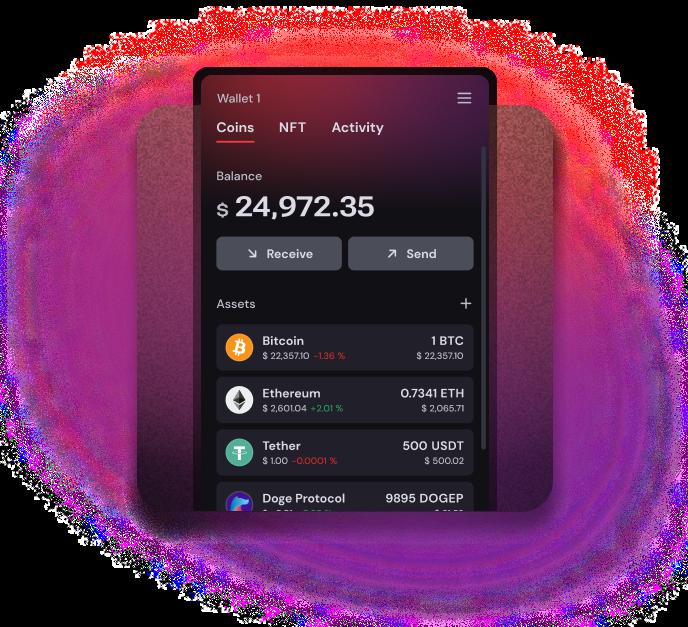
Bitcoin, and all cryptos, have massive potential energy; once this loaded spring uncoils, be on the lookout for major kinetic breakouts.
At these deflated prices, long bitcoin volatility appears to be a reasonable trade in this market.

Long
may be the only reasonable trade.Data as of Nov. 29, courtesy of



Modest gold watches made with superior manufacturing skill, have a centuries-old tradition in Germany. After Glashutte‘s new rise, the watchmakers and their fine watches were able to attain a world-renowned reputation once again. With the Patria, we keep Glashutte’s deep-rooted horological tradition alive: the watch must be noble, beautiful, and precise.
Patria · manufacture caliber · 6600-01

TO OBTAIN FURTHER INFORMATION IN NORTH AMERICA, PLEASE CONTACT Tutima USA, Inc. • 1-888-462-1927 • info@tutimausa.com • www.tutima.com
1. Das Trader Pro software
TradeExchange News
tastyworks options chains
Remora dark pool scanner, LiveVol Pro software
Charts with pivots chosen by longtime trader John Person
Charts with pivots
Charts with pivots
I switched over to another firm called Onsite Trading in Great Neck, New York. Onsite Trading gave me $250K to trade with in 1994. I was the first female trader at this firm. I won the rookie trader of the year award, making over six figures my first year with the firm.

Favorite trading strategy?
I love to catch the options chains off guard by following the massive dark pool prints. That is just a fancy name for following the Institutional money flow. These large institutions do all their trades on an alternative exchange called the dark pool. These are the trades that move the market up and down. The news always comes after the prints.
What percentage of your outcomes do you attribute to luck?
Worst trading moment?
Every trading day at 4 p.m. Eastern Time when the closing bell rings. I love trading and once that closing bell rings, that is when reality comes into play. I have to make a doctor’s appointment, go food shopping, return calls, emails, etc. Being in the trading zone all day is very meditational.
Favorite trading book Reminiscences of a Stock Operator by Edwin Lefèvre.

How did you start trading?
Happy hour! I got lucky and got offered a job as a trader’s assistant working in the million-dollar room at Shonfeld Securities, the biggest prop firm in New York. [A proprietary trading company, or prop firm, invests its own money in the markets instead of collecting commissions for trading clients’ funds.] After two years
LUCK stands for laboring under correct knowledge. I guess all my trades would be considered lucky if we use this terminology.
Favorite trading moment?
It’s always the moment my stop loss is hit. You probably didn’t expect me to say that, but it’s why I am still here trading after 28 years.
Want to be featured as the next issue’s trader? Have story ideas?
Let us know: tips@luckboxmagazine.com
The house always wins. This cautionary quote is certainly true but doesn’t tell the entire story.
From table limits to payout odds, every game in a casino is designed to give the house a statistical edge. The casino may take large, infrequent losses at the slot machines or small, frequent losses at the blackjack table. But if patrons play long enough, the house will inevitably turn a profit.
Casinos rely on this principle as the foundation of their business model: People can either bet against the house and hope luck favors them or be the house and have probability on their side.
Unlike casinos, where the odds are fixed against the players, liquid financial markets offer a dynamic level playing field with more room to strategize. However, successful traders don’t rely on luck.
Traders’ long-term success depends on their ability to use readily available tools, strategies and information to gain a consistent statistical edge.
What’s more, the markets are becoming increasingly accessible to the average person, as online and commission-free trading have become industry standards.
Investors choose from almost unlimited strategies, and options play an interesting role.

Options are financial contracts that give the holder the right to buy or sell an asset on or before a future date. They have tunable risk-reward profiles, enabling investors to select the reliable probability of profit, max loss and max profit of a position and potentially profit in any
Strangles and iron condors benefit from limited movement in the underlying stock.
market conditions—bullish, bearish or neutral.
Investors can use these versatile instruments to hedge risk and diversify a portfolio. Or options can be structured to give more risk-tolerant traders a probabilistic edge.
Besides being customizable for specific risk-reward preferences, options are tradable with accounts of nearly any size because they’re leveraged instruments. In the world of options, leverage refers to the ability to gain or lose more than the initial investment.
Investors may pay $100 for an option and make $200 by the end of the trade, or they may make $100 by selling an option and lose $200 by the end of the trade.
Leverage may seem unappealing because of the risk, but it’s not inherently dangerous. Still, when leverage is misused, it can wreak financial havoc.
Gamblers eventually lose to the house, but investors can come out ahead in the markets
Bet against the house and lose—or be the house and win.
But when used responsibly, the capital efficiency of leverage becomes a powerful tool. It enables investors to put up significantly less capital but still achieve the same risk-return exposure as a stock position.
There’s no free lunch in the market. A leveraged instrument with a 70% chance of profiting must come with some trade-off in increased risk. The risk may even be undefined in some cases.
That’s why the core principle of sustainable options trading is risk management. Just as casinos control the size of jackpot payouts by limiting the maximum amount a player can bet, options traders should limit the size of their positions to control their exposure to potential losses.
And just as casinos diversify risk across different games with different odds, strategy diversification is essential to the long-term success of an options portfolio.
Beyond the potential downside risk of options, other factors can make them unattractive to investors. Unlike equities, which are passive instruments, options require a more active trading approach because of their volatile nature and time sensitivity.
Depending on the choice of strategies, investors should monitor options portfolios daily or at least once every two weeks.
Options trading also has a fairly steep learning curve and requires a stronger knowledge of math compared to trading stocks. Although the mathematics of options can become complicated and burdensome, investors can often make trading decisions with a selection of indicators and intuitive, back-of-the-envelope calculations.
Julia Spina, a member of the tastytrade research team and author of The Unlucky Investor’s Guide to Options Trading, holds degrees in engineering physics and applied mathematics and a master’s in physics. @financephoton

Excerpted with permission from the publisher, Wiley, from The Unlucky Investor’s Guide to Options Trading by
Spina and Anton Kulikov. Copyright © 2021. All rights reserved. This book is available wherever books are sold and at tastytrade.com/ investorsguide.
A short strangle—a neutral strategy consisting of a short out-the-money (OTM) put and a short OTM call—is a highprobability of profit (POP) trade that profits from time and volatility decay instead of large directional moves.
In other words, this strategy profits regardless of whether the market trends moderately upward, downward or sideways, and potential profits are highest during high-volatility conditions, when investors can sell the call and put contracts for larger premiums.
These strategies are probabilistically likely to profit but are undefined risk, meaning they can result in rare but significant losses.
An example of a short strangle with a high volatility underlying, Alphabet (GOOGL), is shown in “Range-bound strategies.”
The strangle shown in the table will be profitable if the price of Alphabet, trading at $95.44 at press time, stays between approximately $90 and $112.50 by Jan. 20.
Also included are quotes for an Alphabet iron condor, a defined-risk neutral strategy which may be more suitable for volatile, single-company stocks because it’s less likely to profit (lower POP) but also carries much less tail risk.
Like the strangle, the iron condor will profit if the price of GOOGL stays between $90 and $112.50 by Jan. 20. But unlike the strangle, the maximum loss of the Alphabet iron condor is capped at $384.
Unlike equities, which are passive instruments, options require a more active trading approach because of their volatile nature and time sensitivity.Julia
Billionaire Mark Cuban wants to pull the pharmaceutical industry up by the roots and plant something new.

In the next issue, Luckbox leans in with Cuban for details on how his new online marketplace called Cost Plus Drugs Company plans to offer prescription drugs at transparent prices lower than most retail pharmacies and even most discount sites.
On the surface, Cost Plus Drugs uses a time-tested business model: “Cut out the middlemen and pass the savings on to you.” But it goes deeper than that.
Cost Plus Drugs negotiates directly with drug makers, sidestepping the layers of markups common in the industry. It also offers radical cost transparency, pricing all medications at cost, plus a 15% markup.
And, as a non-profit company categorized by some states as a public-benefit corporation, Cost Plus Drugs said it makes achieving its social mission— reducing overall drug prices for Americans—crucial to its definition of success.
The costplusdrugs.com online pharmacy launched in January 2022 and now carries nearly 1,000 prescription drugs. Cuban is also building a Texas factory to make some drugs in-house.
Find out more about Cost Plus Drugs and the future of big pharma, including which drug stocks are in the best position going into 2023, in the February/March issue.
69TH ANNUAL MAGGIE AWARDS
> BEST SPECIAL THEME ISSUE (DECISION 2020)
AMERICAN SOCIETY OF MAGAZINE EDITORS


> BEST NEWS & POLITICS COVER 2020—
READERS’ CHOICE (DECISION 2020)
> BEST BUSINESS & TECHNOLOGY COVER 2021—

READERS’ CHOICE (AMAZON’S PREDATORY CAPITALISM)
MAGGIE AWARDS OF EXCELLENCE (68TH & 69TH ANNUAL)
> SPECIAL THEME ISSUE (DECISION 2020)
> SPECIAL INTEREST PUBLICATION (THE ISSUE WITH PODCASTING)



> SPECIAL INTEREST PUBLICATION (DECISION 2020)
> SPECIAL THEME ISSUE (THE HIGH ANXIETY ECONOMY)
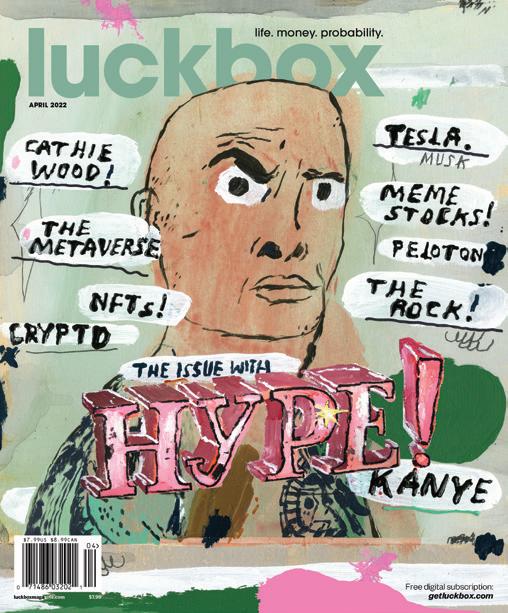



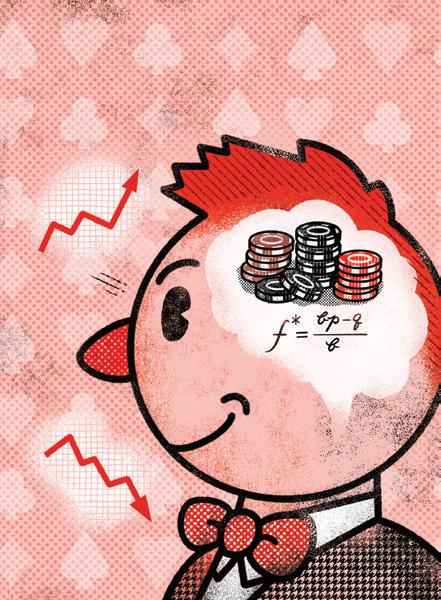









> NEW CONSUMER PUBLICATION 2019
NICHE MAGAZINE AWARDS
> BEST NEW NICHE MAGAZINE 2020
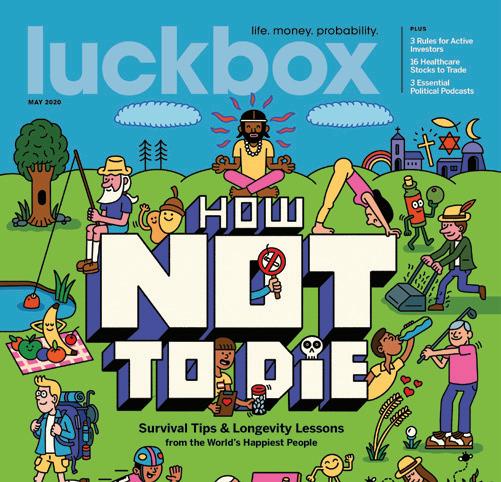
> BEST BUSINESS-TO-BUSINESS MAGAZINE 2020
















> NEW MAGAZINE DESIGN—HONORABLE MENTION 2020
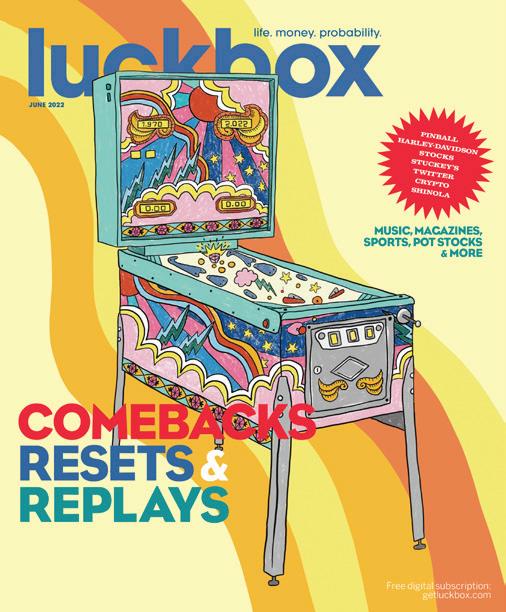
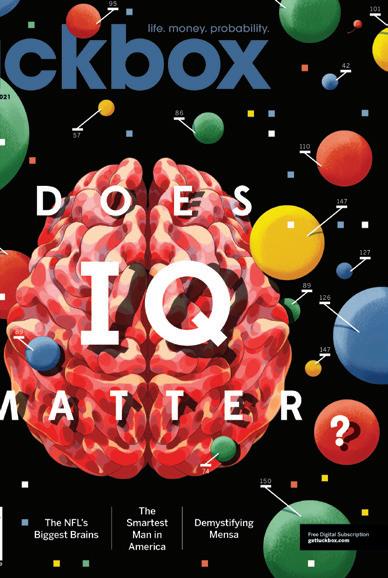
FOLIO EDDIE (EDITORIAL) AWARDS

> BEST FULL ISSUE, CONSUMER (ART ISSUE) 2022
> BEST FULL ISSUE, CUSTOM CONTENT (THINKING IN BETS) 2022
> BEST HOW-TO, SINGLE ISSUE (THINKING IN BETS) 2022

> SERIES OF ARTICLES—HM 2021


> FULL ISSUE (AMAZON)—HM 2021
> BEST HOW-TO, SINGLE ISSUE (ART & SCIENCE OF FORECASTING) 2021































